MHR

MANUFACTURED HOUSING REVIEW

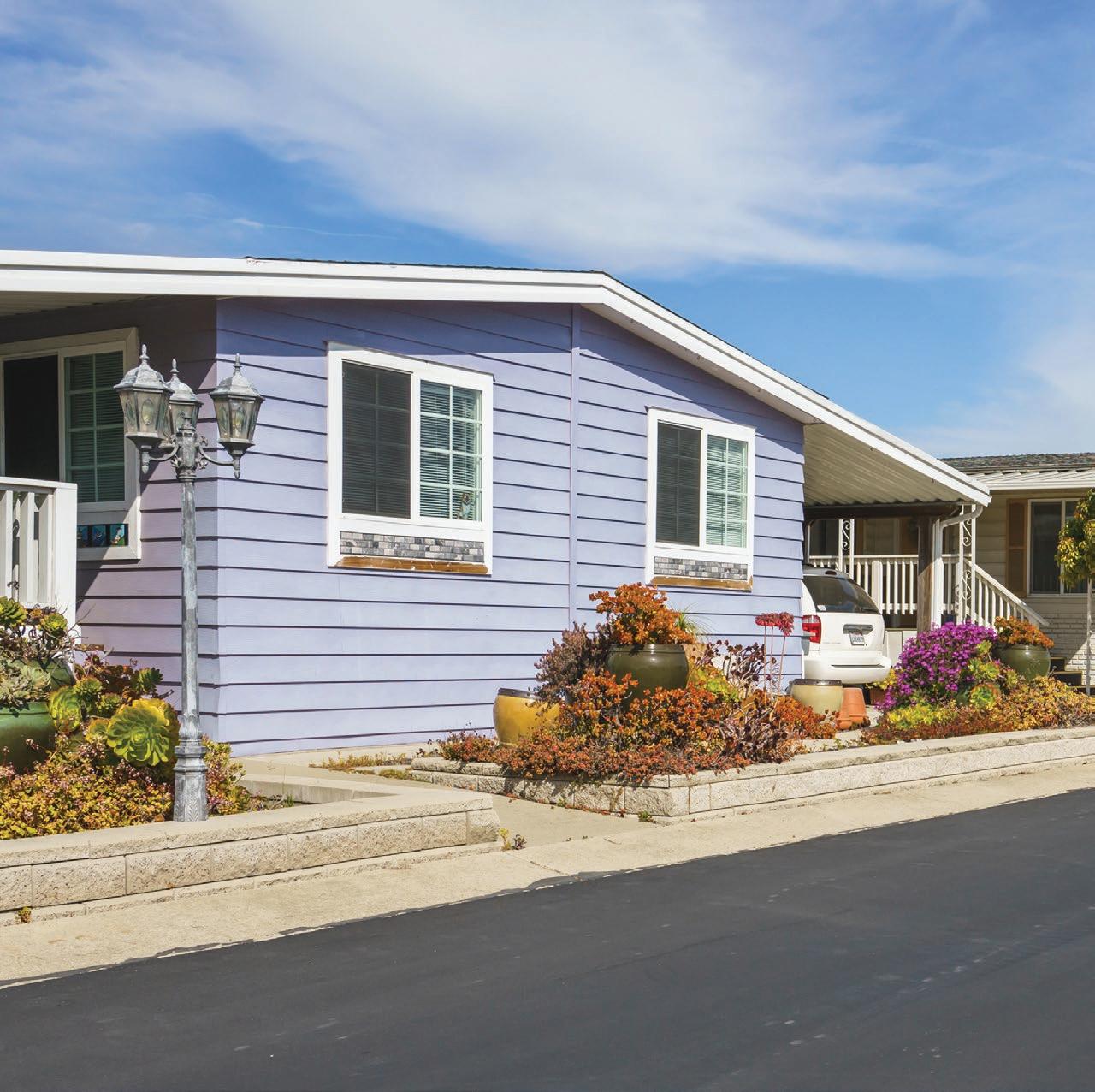
News and educational articles to help you run your business in the manufactured home industry.
RICHEST INDUSTRY CONTENT AVAILABLE ANYWHERE!
Sponsored by:
IN THIS ISSUE:
The Top Ten Ways To Gain Accountability From Your Manager
“TRAILS END” Yields a Fresh Start for Unfair Attacks on the Industry
The ‘Woke’ War on Affordable Housing Property Management – A Liability Rich Endeavor and more!
2022 | Quarter 3
Table of Contents The Top Ten Ways To Gain Accountability From Your Manager 3 By Frank Rolfe First Trust - Biden’s Student-Loan Fiasco 6 By Brian S. Wesbury, Robert Stein, CFA, Strider Elass, Andrew Opdyke, CFA, Bryce Gill Debunking Stereotypes About Mobile Homes Could Make Them a New Face of Affordable Housing 7 By Zachary Lamb Ask Kurt - The legality of Manufactured Home Community Management Practices 12 By Kurt D. Kelley, J.D. Texas’ Housing Manufacturers ‘Hit the Brakes’ in Response to Higher Interest Rates, Economic Outlook 13 By David Jones and Bryan Pope “TRAILS END” Yields a Fresh Start for Unfair Attacks on the Industry 15 By Ben Ivry WOKE, BROKE AND UP IN SMOKE: How the Official Recession Opens a New Dialogue That the Industry Should Be an Active Part Of 18 By Todd Lamb Fair Housing Update 20 By Rick Robinson The ‘Woke’ War on Affordable Housing 21 By Mark Weiss Majority of Consumers Say They Would Consider Purchasing a Manufactured Home 24 By Freddie Mac HUD Charges Management and Owners of a Minnesota Apartment Building with Disability Discrimination 25 Must All Display Homes at Retail Home Centers Have ADA Compliant Wheelchair Ramps? 26 By Jeffrey Stewart Mobile Homes Are a Crucial Source of Affordable Housing Politicians Are Trying To Zone Them Out of Town 27 By Jefferson Lilly Property Management – A Liability Rich Endeavor 28 By Victoria Cowart Why Texas Makes Sense for Manufactured Housing Investment 30 By Laura Calugar Why the DOE Energy Rule Should Be DOA 33 By Mark Weiss SECO Veterans Program 2022 36 By David Roden
The Top Ten Ways To Gain Accountability From Your Manager
Webster’s Dictionary defines accountability as the fact or condition of being responsible. Now, why do we need accountability with mobile home parks? Well, just as we need it in the rest of America today, no one wants to take responsibility. Everyone wants to blame everything on everybody else, whether it’s inflation, high gas prices. It’s not enough to say, “Yeah, I screwed up. I should have done something different.” Instead, we always have to come up with some other group or party that is actually the basis of the
problem, when it’s simply not true.
The danger with the mobile home park is, if the park manger isn’t accountable, if you allow them to blame everything on other market forces, and offer excuses like “people just... don’t want to buy homes anymore”, “people don’t want to pay rent anymore”... pretty soon you will find your mobile home park that you invested your money with and have such great dreams and desires for is not going to perform at all.
So how do we make mobile home park managers accountable? Well, here are my top 10 thoughts.
Number one, you’ve got to take control of your telephone. Every mobile home park, without exception, should have the phone number line ported through a service like Who’s Calling, so every incoming call is recorded, the number is transcribed, the length of the call is timed, and every park owner can review the call registry and find if the manager is even answering the phone.
Park owners will also have a lengthy list of people they can do exit interviews with, and most importantly, they can hear what’s actually being said. If you do not have your phone line, right now, being recorded, being transcribed, you’re making a terrible error. Most mobile home parks that fail in occupancy
By Frank Rolfe
and consumer retention, find it always leads back to bad phone habits.
Number two, mystery shopping. It’s not that hard to call star 67 and call your manager posing as a customer, nor is it all that hard to pay someone that you find on Craigslist to go over to your mobile home park pretending to be a customer. Through mystery shopping, you’ll know the real truth of what happens when people come in. It’s not enough to assume, your manager is doing a great job. You don’t know because you’re not there.
You probably recall one of our greatest presidents of all time, Ronald Reagan’s famous quote, “Trust, but verify.” It’s no different with your managers. You’ve got to verify what happens. What is the customer’s experience when they enter your mobile home park?
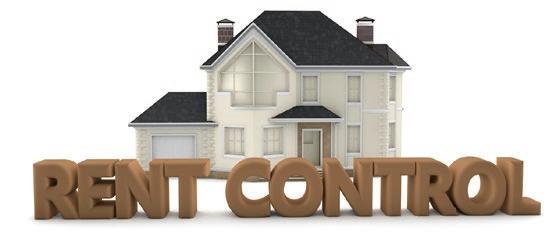
Number three, exit interviews. If you have a mobile home park and you’re not selling the number of homes you hoped to, it would behoove you to take all those phone numbers you collected from Who’s Calling or a similar service, and contact those people. “Hey, how come you didn’t buy the home? What happened? We wanted you as a customer.” You’ll be amazed at some of the things you’ll become aware of. We’ve heard everything from, “Well, I got to the property, but the manager didn’t show up” to, “Oh, yeah, that home, well, I looked at one just like it in the park two doors down, and it was 30% less.” This is the kind of information you have got to have. There’s no greater way to discover why you’re not hitting your sales targets, than exit interviews. You will get an education like no other.
Number four, what we call the sales scope reports. These are reports that we started several years ago in our endeavor to try and sell more homes than we even thought was humanly possible. In the sales scope report, what you have is, you have the manager on a weekly basis, doing such items as, sending you photographs of the signage that they have on the street, photographs of the signage they have in the yard, the window of the home for sale, photographs of the home itself, both inside and out and in the yard, telling you what the home costs, various items such as what are the actual office hours of the property. And we’re doing this to make sure that they are in the ready position. You probably have seen a tennis match. You’ll note when the tennis match begins the person holds the racket in a certain manner before the serve, because they know based on experience, that’s the right position to be in to try and succeed at returning the serve. That’s what the sales
- 3 -
The Top Ten Ways To Gain Accountability From Your Manager Cont.
scope report is on a sales perspective. It’s making sure that your park manager is in the game. If they can’t get you the sales scope report then they probably aren’t gonna be able to deliver any sales at all.
Number five, HD videos of your park, full drive-through HD videos either monthly or quarterly based on the system you wanna utilize. All you need is a GoPro camera, or one of the old Polaroid cubes, a suction cup mount, place it on the roof, not the hood of your car, pointed straight forward. Have the manager start from outside the property, start out the camera, hold up a sheet of paper in front of it saying the day they’re shooting the video, and then just start driving. You will see exactly what it looks like to your customers when they go out to the park, both the entry, all of the streets, and you know what? You can take that video and go to a GoToMeeting webinar, and you can drive literally, visually, virtually in a car with your manager. Have them get on there with you. You can go forward, you can reverse, you can stop the car, all virtually, and it will show you exactly what it looked like if you were in the car with them yourself. Those HD videos have become an extremely important part of any smart park owner’s management style and you should be doing those at least quarterly, but in many cases, monthly.
Number six, you’ve gotta have a helpline. What is a helpline?
A helpline is a phone number and an email address. It’s freely given to every resident in your mobile home park, giving them an outlet to call in the case of a problem. And give them a refrigerator magnet to remind them that says, problem, question mark, then the phone number and email of the helpline. Even reinforce that in your invoices to your customers, or your newsletter. You want them utilize the helpline because that, once again, gains accountability. I’m sure you’ve seen on the back of 18-wheelers things that say, “How’s my driving?” and an 800 number to call. They’re not doing that expecting you to call and say, “Wow, the driver of that truck stays in his lane better than any I’ve ever seen before.” No, they wanna know that information in case it’s weaving or cutting people off or driving too fast. So that’s what the helpline does. Frequently, it gives accountability to you of what’s really going out on the property. If you get a lot of calls with people complaining about the manager, more than likely there is a manager problem.
Number seven, unannounced park visits. Every park owner should visit their mobile home park at least once or twice a year. Even the perfectly run park that has perfect collections
and full occupancy still needs the owner to drop by at least once every 12 months. Why would that be? Well, you wanna see what’s going on. You never can really fully know through any of these virtual techniques, what really happens. Only you can tell being there yourself. And while you’re there, it gives you great idea to learn more about the market. How are things doing? How’s the occupancy at the mall? Are the big factories hiring or are they laying off? These are also little bits of information that will help you when it comes time to decide whether to sell your park or not. So unannounced park visits, again, a great way to get accountability from the manager, and since they don’t know when you’ll drop by, they never know when you’ll be coming again, and that will definitely keep them on their toes.
Number eight, having a regular monthly process of budget actual indifference. What you do is you take the budget for your mobile home park, and all the various line items, you add a second column of the actual results, line item by line item, and then a third column tells you the difference. Economically, are you ahead? Are you making more money than you thought? Or are you behind? Are you losing money on certain line items? Then just simply take two highlighters. One that’s green, one that’s orange. Everything that you’re ahead of the game, cross through with a green highlighter and ignore it. Anything you’re not doing as well on, take an orange highlighter and then have a session with yourself, an honest session, brainstorming why. Why is it worse than I thought? You might say, “Well, my water/sewer cost is higher than what my budget was. Is it a leak? No, wait a minute, I remember I filled five more lots recently, and that’s where the water is going, and that’s why my occupancy revenue is actually higher than what I budgeted.” Every orange stripe needs to have an answer, and that goes back to accountability by the owner.
Number nine, you need to have an additional gauge cluster that we haven’t talked about. One gauge should be, collections. How are your collections? Every mobile home park should have perfect collections, ‘cause we all should be working under a no pay, no stay philosophy. You’re free not to pay the rent, but if you don’t pay the rent, you can’t live there. You cannot allow people to live in your property unpaid. If a manager is doing a good job, that collections meter will show perfect collections. Occupancy meter. That’s the actual meter showing for everything we just talked about, whether or not you are filling and staying full. You’d never want that meter to be declining. And then, number three, your water
- 4 -
The Top Ten Ways To Gain Accountability From Your Manager Cont.
and sewer gauge, and that tells you what your water/sewer cost is because that’s, in most mobile home parks, the single largest line item. If your manager is doing a poor job or if you’re doing a poor job, that gauge will never be where you thought it would be.
And then finally, number ten, you gotta keep all interactions with your manager focused on accountability. You need to constantly be talking about the numerical basis of your business. Don’t gloss over it. If you’re talking about sales with your manager, you wanna know how many calls you got, how many showings you had, how many applications were made, how many homes were sold? You gotta be more like a car dealer. You ever been in a car dealership, and sometimes you’ll see these boards. Maybe you see a glimpse of it through the open door to the break room, and it shows every person’s name and how many units they sold. They don’t care about anything else, they simply care about performance. That’s how you have to be with your manager. If you really want accountability, you have to force it by requesting accountability of your people. It’s not that hard. In fact, I think good managers prefer a system based on accountability. It shouldn’t be a popularity contest, being the manager of a
mobile home park. All that should matter is the performance, and a manager who is good at performance and loves being measured by performance is typically someone who really enjoys accountability.

The bottom line to it is, James Dimon, the CEO of JP Morgan, recently said, “We are entering an economic tsunami.” We don’t exactly know what is going to happen or how severe it will be. But it would behoove every mobile home park owner to take steps right now to gain accountability because that will ensure your success no matter what happens in the American economy.
Frank Rolfe has been a manufactured home community owner for over two decades, and currently ranks as part of the 5th largest community owner in the United States, with more than 23,000 lots in 28 states in the Great Plains and Midwest. His books and courses on community acquisitions and management are the top-selling ones in the industry. To learn more about Frank’s views on the manufactured home community industry visit www.MobileHomeUniversity.com

- 5 -
Biden’s Student-Loan Fiasco
The Dow Jones Industrial Average fell more than 1,000 points on Friday, caused apparently by Fed Chairman Jerome Powell’s attempt to use a brief speech to channel the ghost of Paul Volcker. Obviously, this was part of the market’s worries, but the stage was set when the Biden Administration announced a student loan forgiveness program last week. The more we learn about this, the worse it looks.
The executive order would send an already very bad student loan system – a system designed more to create jobs for academics then to really help students – into overdrive, generating huge costs for taxpayers, soaring college prices, and a massive shift in resources toward the already bloated college sector, which already generates negative marginal value-added for both students and our country.
The Biden Administration says the changes would cost $240 billion in the next ten years. The Committee for a Responsible Federal Budget says $440 - 600 billion. A budget model from Wharton says $1 trillion. But even that $1 trillion figure might be way too low.
The key is that, as bad as it is, the cancellation of some student debt that already exists is only a small part of the policy change. The much bigger change, and the one that the market has finally begun to absorb, is limiting future payments on debts to 5% of income, but only after the borrower’s income rises above roughly $30,000 per year. For example, if someone makes $70,000 per year, then no matter how much they borrow they’re limited to paying $2,000 per year (5% of the extra $40,000). After twenty years, any remaining debt would simply disappear.
Think about the perverse incentives!
For the vast majority of students, choosing this “incomebased repayment” system would be a no-brainer. And once they pick it, they wouldn’t care at all whether their college charges $35,000 per year (tuition, room, board, and fees), $85,000, or even $150,000. In fact, students would have an incentive to pick the priciest college with the best amenities they could find and pay for it all with federal loan money, because their repayments are capped. If you always wanted Rodney Dangerfield’s dorm room from the movie Back to School, you’re in luck!

Meanwhile, students would have the incentive to take out loans greater than what they need because they can turn the excess into cash for “living expenses.” Then they could use it to buy crypto, throw parties, or pretty much anything else. Who cares?!? The government would limit their future repayments. And here’s what might be the worst part: colleges would have an incentive to enroll students even if they have horrible future job and earning prospects. By enrolling people no matter how poorly prepared they are, a college can charge whatever they want and get huge checks from the federal government. And the unprepared students won’t care because they really don’t have to pay it back. In effect, colleges could create massive and perfectly legal money-laundering schemes.
We are not legal experts and do not know whether the new proposal will be implemented fully. But, if it is, watch out: college costs are poised to skyrocket and academia is courting a political backlash of enormous proportions. Meanwhile, the market is attempting to digest just how far from economic reality politicians have become. The political allocation of capital is a recipe for economic disaster.
- 6 -
Date/Time (CST) U.S. Economic Data Consensus First Trust Actual Previous 8-31 / 8:45 am Chicago PMI – Aug 52.4 52.1 52.1 9-1 / 7:30 am Initial Claims – Aug 28 248K 245K 243K 7:30 am Q2 Non-Farm Productivity -4.4% -3.9% -4.6% 7:30 am Q2 Unit Labor Costs +10.7% +10.7% +10.8% 9:00 am ISM Index – Aug 51.9 52.2 52.8 9:00 am Construction Spending – Jul -0.3% +0.3% -1.1% afternoon Total Car/Truck Sales – Aug 13.3 Mil 13.3 Mil 13.3 Mil afternoon Domestic Car/Truck Sales – Aug 10.9 Mil 10.5 Mil 10.7 Mil 9-2 / 7:30 am Non-Farm Payrolls – Aug 300K 300K 528K 7:30 am Private Payrolls – Aug 300K 300K 471K 7:30 am Manufacturing Payrolls – Aug 15K 20K 30K 7:30 am Unemployment Rate – Aug 3.5% 3.5% 3.5% 7:30 am Average Hourly Earnings – Aug +0.4% +0.4% +0.5% 7:30 am Average Weekly Hours – Aug 34.6 34.6 34.6 9:00 am Factory Orders – Jul +0.2% -0.8% +2.0%
Consensus forecasts come from Bloomberg. This report was prepared by First Trust Advisors L. P., and reflects the current opinion of the authors. It is based upon sources and data believed to be accurate and reliable. Opinions and forward looking statements expressed are subject to change without notice. This information does not constitute a solicitation or an offer to buy or sell any security.
630-517-7756 • www.ftportfolios.com August 29, 2022
Brian S. Wesbury – Chief Economist Robert Stein, CFA – Dep. Chief Economist Strider Elass – Senior Economist Andrew Opdyke, CFA – Senior Economist Bryce Gill – Economist
Debunking Stereotypes About Mobile Homes Could Make Them a New Face of Affordable Housing
When you hear the words “trailer park” or “mobile home park,” what comes to mind? Crime? Poverty? Vulnerability to natural disasters? These negative images reflect the stigma, reinforced by popular culture, that many U.S. residents assign to manufactured home parks – the official name for these dwellings under federal standards adopted in 1976. Over 20 million Americans live in manufactured housing – more than in public housing and federally subsidized rental housing combined. Yet many people, including urban planners and affordable housing researchers, see manufactured housing parks as problems. In contrast, we see them as part of the solution to housing crises.
We are urban planning scholars who study climate vulnerability, community economic development and equity in urban land use. Our research suggests that misguided stereotypes blind scholars and policymakers to the possibility that mobile homes can help address the affordable housing crisis and climate change. Here are some misperceptions about this widespread form of housing.
Stereotype 1: Manufactured housing is shoddy
Many people think manufactured homes are poorly built, even though these structures, unlike site-built houses, have had to meet federal safety standards since 1976. These safety standards have been periodically updated, often in response to disasters. Today, new well-installed factory-built homes are comparable to site-built homes when it comes to standing up to wind, fire and other disaster threats
Compared to homes built on-site, manufactured housing costs half as much per square foot – partly because it’s easier, more
By Zachary Lamb
predictable and cheaper to build homes in factories. Many quality problems associated with manufactured housing arise from home installation, park maintenance and infrastructure issues. No matter how well-built homes are, residents can suffer if they are installed on unstable foundations, or if park owners allow water, sewer or power utility infrastructure to crumble.
Stereotype 2: Manufactured housing parks are always exploitative
While many manufactured housing residents own their homes, they may not own the land the homes sit on. This can leave them at the mercy of predatory park owners and investors. Moving manufactured homes is difficult and expensive, despite the “mobile” label, so residents of manufactured home parks can’t easily relocate when park owners allow conditions to deteriorate, raise rents or evict residents.
YouTube Video
But there are alternatives. Residents at over 1,000 manufactured housing parks in the U.S. have jointly bought their land, creating Resident Owned Communities. This cooperative model gives residents control over their homes and neighborhoods. Resident-owned parks preserve affordability and help residents address their own problems, including vulnerability to climatedriven disasters.
Stereotype 3: Manufactured housing parks aren’t urban or dense

Manufactured home parks are often dismissed as rural and low-density, and therefore irrelevant to urban housing needs. However, 61% of all manufactured housing is located in a metro area, and 8% is in urban centers. The density of these communities, typically eight to 15 homes per acre, is often greater than nearby neighborhoods. In Houston, for example, many manufactured housing parks are located in suburban areas close to the central business district. If anything, local zoning in many cities limits the density of manufactured housing parks.
Stereotype 4: Manufactured housing parks are uniquely disconnected
Critics often assert that manufactured housing parks are disconnected from surrounding neighborhoods. In reality, this pattern applies to most U.S. residential neighborhoods built since World War II, including gated communities and cul-desacs. Residents of these communities value the privacy, safety and neighborhood cohesion their street patterns provide. Biased local zoning regulations also frequently reinforce manufactured
- 7 -
Saralake Estates Mobile Home Park in Sarasota, Florida. Jeffrey Greenberg/Universal Images Group via Getty Images
housing parks’ isolation by requiring them to be separated and hidden behind tall privacy fencing. Where fragmented street networks create problems for residents, like reduced walkability, they can be retrofitted by reconnecting streets.
The real challenges
While these stereotypes often don’t reflect reality, manufactured housing communities face real challenges. Local governments and park owners often are eager to convert parks to what they describe as “higher and better uses,” which frequently means evicting residents for commercial development or more expensive housing. Private equity investors, pension funds and sovereign wealth funds are buying up manufactured housing parks, which they view as reliably profitable investments. When owners redevelop parks, they can evict residents with little recourse.

Residents of manufactured home parks are also increasingly vulnerable to climate change impacts. Biased zoning rules have forced many of these communities to locate on less desirable land, including flood-prone sites, industrial areas and highway fringes. In a 2021 review, we found that 22% of manufactured housing parks across nine states were located within current 100-year floodplains – zones with a 1% chance of flooding every year.
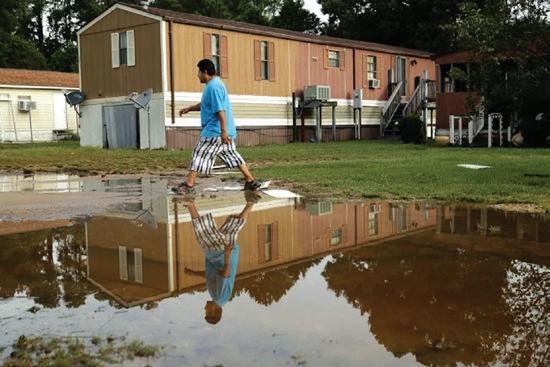
Manufactured housing is especially common in hurricaneprone regions like Florida, Louisiana and Texas. While updated building standards have substantially improved safety, increasingly ferocious storms still pose a real threat
Aging manufactured home park infrastructure, including sewer, water and electricity systems, is highly vulnerable to extreme heat, wind, drought, flooding and wildfires. And since residents typically have lower incomes, they have fewer resources to respond when extreme events strike.
Manufactured housing, resilience and justice
With economic, political and technical support, evidence shows that manufactured housing can overcome these challenges. To date, 20 states have adopted laws that help residents purchase the manufactured home parks where they live. These policies have helped ROC USA, a nonprofit social venture, create a network of over 280 cooperatively owned, limited-equity resident-owned communities that are home to over 18,000 households.
ROC USA provides low-cost loans to resident cooperatives to buy land and make needed capital improvements such as upgrading water, sewer and electric systems. Their network of regional housing experts then works with communities for at least a decade to develop and sustain their ability to manage their parks.
Over three decades, no ROC USA community has ever defaulted on a loan or sold their park. A growing number have adopted climate-responsive measures, such as building storm shelters and community centers, upgrading drainage infrastructure and providing emergency post-storm tree clearance and other forms of mutual aid. Other residentowned communities are investing in renewable energy and energy efficiency, reducing greenhouse gas emissions and energy costs for their residents.
Policymakers are paying attention. The Biden administration’s 2022 housing plan includes extensive support for manufactured housing parks.
California Gov. Gavin Newsom has called for increasing state funding to preserve manufactured housing parks as affordable
- 8 -
Debunking Stereotypes About Mobile Homes Could Make Them a New Face of Affordable Housing Cont.
The Rancho La Mesa Mobile Home Park in Sunnyvale, California (right), is more densely developed than adjacent single-family residential neighborhoods (left). Google Earth, CC BY-ND
Angel Flores checks the condition of friends’ manufactured homes on Sept. 17, 2018, in Kinston, North Carolina, three days after Hurricane Florence made landfall in the state. Chip Somodevilla/Getty Images
Debunking Stereotypes About Mobile Homes Could Make Them a New Face of Affordable Housing Cont.
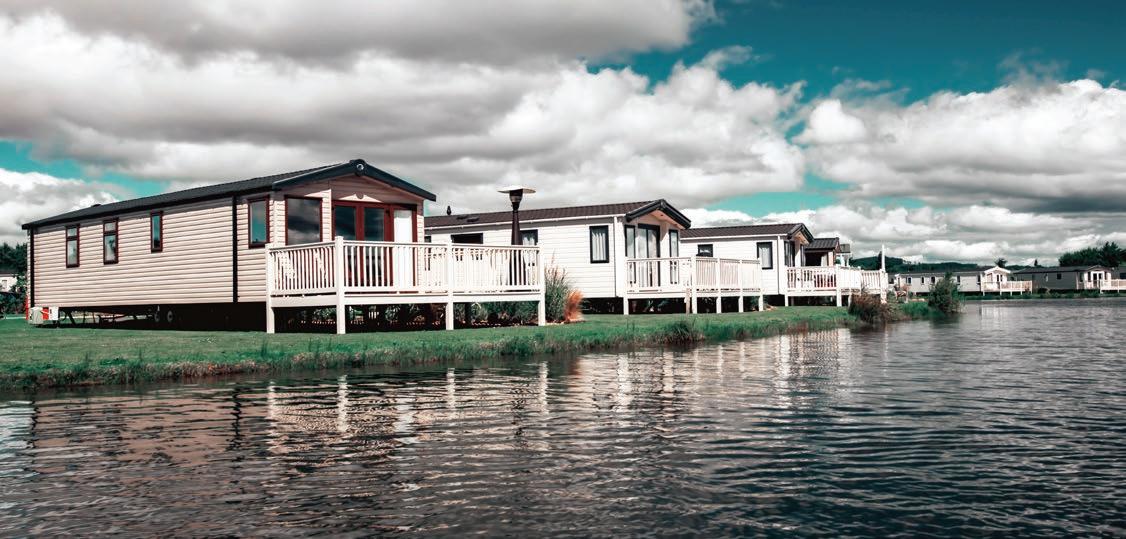
housing. The U.S. Department of Energy recently adopted more ambitious efficiency standards to reduce energy costs for residents of manufactured housing.

This article is republished from The Conversation, a nonprofit news site dedicated to sharing ideas from academic experts. It was written by:
Zachary Lamb, University of California, Berkeley; Jason Spicer, University of Toronto, and Linda Shi, Cornell University
Zachary Lamb receives funding from The Leventhal Center for Advanced Urbanism.

Jason Spicer and Linda Shi do not work for, consult, own shares in or receive funding from any company or organization that would benefit from this article, and have disclosed no relevant affiliations beyond their academic appointment.
Zachary Lamb is an assistant professor in the Department of City and Regional Planning. His research focuses on the role of urban planning and design in shaping uneven vulnerability and resilience in the face of climate change.
Rustic
In our view, these efforts should be coupled with legislation that protects manufactured housing park tenants and expands the limited-equity ROC model. Governments could enact laws that offer tenants opportunities to purchase their rental units and provide subsidized loans and grants to resident cooperatives. Decades of experience shows that resident ownership can transform manufactured home parks from sites of stigma and vulnerability into stable and resilient communities.
In 2018, Professor Lamb completed his PhD at MIT’s Department of Urban Studies and Planning. His dissertation focused on the role of design in shaping urban flood infrastructure and the changing spatial politics of urban flooding through two case study cities, New Orleans, Louisiana and Dhaka, Bangladesh. His current book project, Making and Unmaking the Dry City, focuses on the historical evolution and contemporary problems of flood mitigation in these two cities. After completing his PhD, Professor Lamb was selected to be a Princeton Mellon Fellow in Urbanism and the Environment. Professor Lamb is also the co-founder of Crookedworks, a design-build firm that uses collaborative design and building projects to tackle complex urban challenges, including food security, cross-species living, and climatechange hazards. Professor Lamb completed his Masters of Architecture at MIT in 2010 and received his Bachelors of Art in Art History and Practice and Environmental Studies from Williams College in 2002.
- 9 -
Pines in North Attleborough, Massachusetts, is a limited-equity resident-owned community for those over 55. Established in 2015, it is run by a democratically elected board. ROC USA, CC BY-ND
intuitive & powerful manufactured housing software
Everything
✓ Easy setup
✓ Live chat support
✓ ILS posting for vacant lots
✓ Online applications
✓ Online payments
✓ Online maintenance
✓ Manage lot availability, utilities & charges

✓ Manage owned or rented homes & RVs

✓ Track home inventory

✓ Vacancy & prospect tracking

✓ Violations management
✓ Email & text communications

✓ Vendor payments
✓ Property accounting
✓ Walk-in payments
✓ Owner payments & reports
✓ Property websites†
✓ Online lease execution †
✓ Utility billing & invoice processing†
✓ Investment management†

YardiBreeze.com | (800) 866-1144 Get a personalized demo to see why Breeze Premier is the perfect tool to run your business from anywhere
“All of our needs are met in Breeze Premier, making management easier and more cost-efficient.”
Christine Fraser Summit Communities
to manage your
you need
communities
apply †Additional fees apply Affordable Condo/HOA Self Storage MH
*Minimums
Ask Kurt
The legality of Manufactured Home Community Management Practices


QUESTION
“I have a tenant who is a repeated park rules violator. The tenant recently adopted a chihuahua. First, the tenant never applied to have the animal approved to bring into the park as required by the Community Rules. The tenant reports she is now in the process of getting the doctor to designate the dog as a service animal. Second, the tenant has a history of leaving her old dogs unattended outside her home and rarely picksup her animal’s waste.

Is there a document that I can have her sign that serves as evidence that she agreed to take care of her animal?” -- R.L. of Indiana
ANSWER
Can the owner still be fined for leaving the dog unattended?

Can the owner be fined for not picking up the waste of her animal? How many of these violations can take place before the park can ask her to get rid of her dog or non-renew her lease?
Hi Mr. L. There are lots of questions here to unpack so I’ll start with some basic information that applies in almost all jurisdictions regarding animal ownership restrictions by landlords. Community Rules are designed to enhance the livability of the community for all tenants. When a community manager enforces a rule, they may upset the rule violator, but they generally make every other tenant happy. Most tenants prefer to be surrounded by well-behaved tenants, even if they themselves aren’t. There are two types of fair housing and federally protected animals. The first are ‘Service Dogs’ which have the most protection. These are dogs specifically trained to perform a task for someone with a disability. Dogs are the only animal approved for this status. Examples include a seeing-eye dog, a dog trained to detect the onset of seizures, and dogs that assist those with limited mobility. These dogs are allowed to go almost everywhere, including restaurants
- 11 -
and grocery stores with their owners. It is rare to see tenants or other dog owners fraudulently seek protection for dogs that aren’t Service Dogs.
The second type of fair housing protected animals are ‘Emotional Support Animals’. These animals have less legal protection than Service Dogs. For example, places which serve food or provide health care services can specifically exclude them, as can transportation providers such as airlines. These animals have no specific training and can be virtually any type of animal. Their role is to give emotional support for their owners. The medical need for emotional support must be documented by a ’Medical Professional’. The definition of a Medical Professional is broad and not limited to a Medical Doctor. Other types of medical professionals including licensed therapists, RN’s, DC’s, Physician’s Assistants, and nurse practitioners also fit this definition. This is the animal category where most tenants go to seek a legal exception to a landlord’s pet restrictions.
When a tenant seeks a waiver or an exception to a landlord’s pet restrictions by claiming their pet is a protected Emotional Support Animal, and not a pet subject to landlord pet restrictions, the landlord may demand the following three pieces of documentation:
• A letter from a Medical Professional saying the animal is a medical necessity for the tenant. Landlords can demand the letter specifically name a specific animal and the specific tenant the animal is emotionally assisting. Landlord’s may also seek an annual updated letter for such animals.
• A written dated affirmation from the Tenant seeking the protected animal status; for an example form letter, go to Forms on the Mobile Insurance website under Service or Emotional Support Animal Letter from Tenant”; and
• A letter from a veterinarian stating the specific animal is up to date on all recommended vaccinations. Note: Internet provided “Support Animal” Certificates need not be considered by Landlords as proof of the animal’s medical necessity to the exception applying tenant.
Presuming a tenant supplies all three of the above pieces of documentation, the safest option is for a landlord to allow the animal to reside with the tenant. Failing to do so can create a valid claim of illegal discrimination by the tenant. Landlords may stand firm and claim that allowing the non-compliant
Ask Kurt
animal is not a reasonable request for special accommodation but doing so may cost a significant amount in legal defense fees. Most community owners have animal bite liability coverage. Most don’t have illegal discrimination insurance coverage.
Once a tenant has a properly documented a legally compliant Service Dog or Emotional Support Animal, their obligation is to follow all other evenly enforced, reasonable community rules regarding animal ownership. Leash, control, safety, and animal waste cleanup rules still apply. Those who allow their animals to violate these animal ownership rules may still be legally evicted from the property.
IN CONCLUSION
Can the owner still be fined for leaving the dog unattended? YES
Can the owner be fined for not picking up the waste of her animal? YES
How many of these violations can take place before the park can ask her to get rid of her dog or non-renew her lease? ONE or more The key is consistent enforcement, else violators will have evidence of illegal discriminatory management intent
Is there a document that I can have the tenant sign that serves as evidence that they agreed to take care of her animal? YES Forms
Kurt Kelley is a lawyer and the President of Mobile Insurance, an insurance agency that caters specifically to Manufactured Home Community owners and managers.
Kurt@MobileAgency.com www.mobileagency.com
- 12 -
Texas’ Housing Manufacturers ‘Hit the Brakes’ in Response to Higher Interest Rates, Economic Outlook
COLLEGE STATION, Tex. (Texas Real Estate Research Center) – After two years of incessant activity, Texas’ housing manufacturers pulled back on production as the industry adjusted to higher interest rates and a mixed economic outlook.
Results from the latest Texas Real Estate Research Center at Texas A&M University (TRERC) indicate the production index dipped into negative territory in July and will likely fall further in coming months.

The Texas Manufactured Housing Survey’s (TMHS) sales index reached a record low on top of eight consecutive monthly decreases, and the number of cancellations elevated amid rapid changes in the mortgage market.
“Manufacturers had to hit the brakes after two years of playing catch-up with retail and community demand,” said Rob Ripperda, vice president of operations for the Texas Manufactured Housing Association. “When backlogs were running around eight months, retailers were scrambling to keep homes on their lots and avoid stockouts.”
Backlogs have fallen substantially over the past year, with particularly stark readings in the TMHS index since May.
“Manufacturers kept pushing their productivity higher, while economic conditions started lowering the number of potential buyers showing up on retail lots. Inventories filled up, and retailers are now canceling existing orders that don’t have buyers already lined up,” said Ripperda.
Dampened demand is expected to persist during the second half of 2022, and the industry responded with the first TMHS employee-index contraction since onset of the COVID-19 pandemic.
“Payroll adjustments are in line with trends we are seeing in the broader labor market,” said TRERC Senior Research Associate Wesley Miller. “Despite an uptick in initial unemployment insurance claims at the national level, there is still a significant shortage of skilled labor, pushing nominal wages higher. Housing manufacturers expect the shortage to persist and are preparing to raise wages even higher.”
By David Jones and Bryan Pope
While labor costs are increasing, prices paid for raw materials fell for the second straight month.
“Commodity prices are finally taking a breather, and the cost of lumber reached a new low for 2022 this week,” said TRERC Research Economist Dr. Harold Hunt. “Although still problematic, supply chains have been stabilizing over the past 12 months and could ease prices further. The timing couldn’t be better as the U.S. economy continues to slow.”
In addition to economic-growth concerns, the manufactured housing industry is grappling with impending regulatory changes from the Department of Energy. Despite the various headwinds, the TMHS capital-expenditures index held well above zero, indicating longer-run optimism behind the cloud of uncertainty.
Funded by Texas real estate licensee fees, TRERC was created by the state legislature to meet the needs of many audiences, including the real estate industry, instructors, researchers, and the public.
Thousands of pages of data are available at the Center’s website. News is available in our twice-weekly electronic newsletter RECON, our Real Estate Red Zone podcast, our daily NewsTalk Texas feed, on Facebook, on Twitter, on LinkedIn, and on Instagram. To request a free press subscription to our quarterly flagship periodical TG magazine, contact David Jones at the e-mail address above. Subscribe to Center news releases here
- 13 -
David Jones d-jones@tamu.edu 979-845-2039 Bryan Pope b-pope@tamu.edu 979-845-2088
Virtual Mobile Home Park Investor's Boot Camp
Learn the mobile home park insider secrets, tricks and shortcuts in a live online 3-day immersion event.
Mobile HomePark Investment Books & Courses

Mobile Home Park Home Study Course
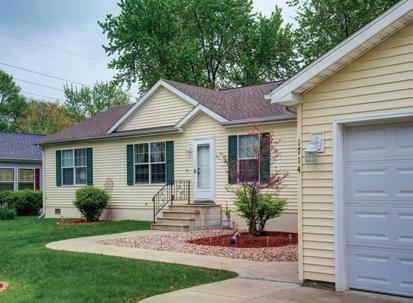
This mobile home park course is hundreds pages and hours of audio. This is not like other real estate courses that just gloss over the subject.
Mobile Home Community Manager Training






The Certified Community Manager Program teaches your Manager how to be a star, and then follows that up with continuing education and support to make sure they play at the top of their game.
The Ultimate Mobile Home Investing & Repair Course
We Will help you to master the entire investment process from start to finish. Knowing the steps is not enough. We also help you to identify the important details and teach you how to avoid the risks associated with mobile home investing and repair!
Mobile Home Park Due Diligence Manual
This manual allows you to find flaws that protect you from overpaying and losing your down payment. It helps point out the drivers to profitability that will allow you to proactively push your returns.
Mobile Home Park Deal Evaluation
Quickly and reliably get the answer to your question: Is this a good deal or not?
MHU.com/LEARN
“TRAILS END” Yields a Fresh Start for Unfair Attacks on the Industry
Vice News brought out a story recently that was targeted to position the “evil” mobile home park owner once again beating up on the residents. But that’s not the way it came across. Instead, it was more a story of a community owner that was simply too nice to the residents and that ended in the collapse of their business model and changes the residents ultimately didn’t like (but had no problem with while they benefitted from them). Here are the facts of the story:
• A mobile home caught fire in a mobile home park called Trails End in California.
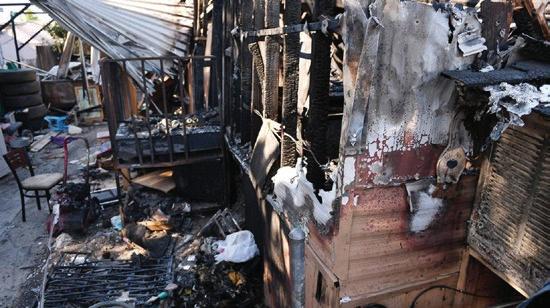
• The fire that started the problem at Trails End was in a privately-owned home – not a park-owned rental. The park owner had nothing to do with it. The resident caused the fire, and the condition of the home was 100% the fault of the homeowner.
By Ben Ivry
• The issues with the park that the city used to seize control and place it with a receiver revolved around home condition and not anything to do with the owners of the park. Case in point, note that all the construction in the video revolves around solely home renovations. I didn’t see any digging up of utilities or fixing of roads – the items a park owner is responsible for.
• The investigation of the fire by the city yielded a sudden outcry that the mobile home park was full of privatelyowned mobile homes that had several code violations, and that the residents were not keeping their lots free of combustible debris.
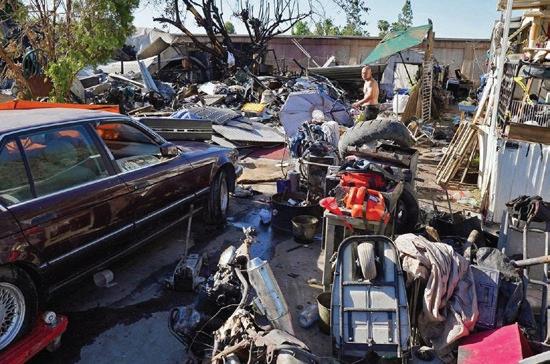

• The court-appointed receiver in charge of the property got into a verbal altercation with the reporter over how awful the residents are and how they disregard all rules and that is why the community is a total mess.
• The attorney interviewed from a California resident complaint office admitted that nobody living in Trails End could afford to live anywhere else, which pretty much means that they were incredibly fortunate to have a home there. She also agreed that they were less than ideal tenants and a new owner would want a better class of customer.
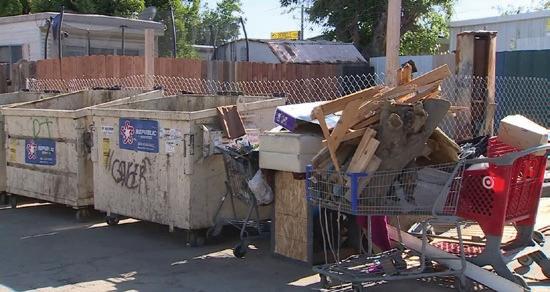
- 15 -
(Photo: FOX26 News Videojournalist John Dwelle)
Trails End Mobile Home Park (Photo: FOX26 News Videojournalist John Dwelle)
CRAIG KOHLRUSS | Credit: ckohlruss@fresnobee.com
CRAIG KOHLRUSS | Credit: ckohlruss@fresnobee.com
“TRAILS END” Yields a Fresh Start for Unfair Attacks on the Industry Cont.

• The judge at the “trial” at the end of the segment does not even take sixty seconds to announce that Trails End is to be sold to a professional ownership group that will raise rents and displace most if not all the residents to bring the failing property back to life.
That’s not a story of the “evil” park owner beating up on the residents. That’s a story of the “evil” tenants taking advantage of the benign mom and pop owners. And here are the lessons learned on my part from this story:
• The only management style that works in a manufactured home community is one built on structure and rules and not a laissez-faire attitude. If the owners had told residents to keep their homes and yards clean and in conformance with city codes, none of this would have happened. I believe the correct name for this attitude is “tough love”.
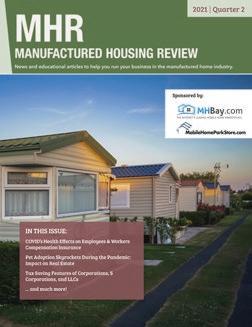
• Many residents – if left to their own devices – will do things out of convenience and with no thought whatsoever to their neighbors or the surrounding community.

• Code enforcement officials in this town in California are partly to blame for not monitoring conditions that had obviously built up for decades (there’s no way the property could look like the scenes shown in the video without many years of continual rules neglect).
• The media MUST understand that the “park” in “mobile home park” stands for “parking lot” and not “national park”. The owners of the property are NOT the owners of
the homes except in those rare cases where they have a rental home or two or are bringing in homes to fill vacant lots.
• The residents abused the system, got caught, and don’t like the ending which is that the nice mom and pop owners -- who let them get away with murder -- are being replaced by a professional investor group that will enforce collections and rules enforcement and most certainly raise the rents to market levels.
So perhaps the correct title for this Vice News piece would have been “Don’t Bite the Hand That Feeds You” as there is some degree of moral outrage when you take advantage of an owner who is being perhaps too nice and then complain when you lose that leniency. The name “Trails End” was a fairly accurate depiction of the fact that these residents had self-inflicted a change in ownership of the property and, as a result, it was the end of their living in an environment free from rules and market prices.
- 16 -
SUBSCRIBE! Manufactured Housing Review Magazine www manufacturedhousingreview com staff@manufacturedhousingreview com
Ben Ivry has written for The Economist, The Wall Street Journal, Newsweek, Time, The New York Times, Bloomberg.com, and The Washington Post.



Manufactured Home Retailers Manufactured Home Community Owners 800-458-4320 service@mobileagency.com Call or email today for a free consultation Special INSURANCE PROGRAMS with Industry Leading Value INSURANCE MOBILE 800-458-4320 • Retailers • Communities • Developers • Transporters • Installers Protect your Investments
Kurt Kelley - President
WOKE, BROKE AND UP IN SMOKE: How the Official Recession Opens a New Dialogue That the Industry Should Be an Active Part Of
After cringing through a year and a half of some of the worst decision-making in U.S. history, the Biden administration – and the woke folks who run It – have officially driven the car into a ditch and they won’t be able to get it back on the road before the midterm elections.
Here are some ideas:
By Todd Lamb

Assuming that American voters are more concerned about their pocketbooks than the fate of the Okaloosa darter or the price of electric vehicles five years in the future, there should be a regime change shortly which will result in a deadlocked Congress and complete political inertia until 2024. Meanwhile, the recession will rage on with the stock market and singlefamily home markets decimated, along with massive layoffs, little consumer spending and a general stupor and lack of energy that only a recession/depression can bring.
And that’s good news for the manufactured home community business.
For decades, mobile home parks have been beaten to death by the media which reduced them to the poor distant cousin of all other forms of real estate. Office, retail, lodging, apartments, self-storage all were the toast of the town, while mobile home parks were scoffed at and publicly shamed. Then came Covid and a new era of respect was born. American investors and lenders found that the combination of essential workers, retired seniors and affordable housing created a steel dynamo that could weather just about anything America could throw at it. Meanwhile, all those glitzier real estate investments fell from grace as nobody really needed them anymore and the resulting failures and setbacks made mobile home parks look a whole lot more attractive when compared to the alternatives.
Now that a recession is upon us, let’s harness that power to take the manufactured home community industry to the next level.
• Form a consortium of business media outlets to promote publishing articles on mobile home parks as the safe harbor in an uncertain America. This is the same concept that Esther Sullivan claims to have used to demolish the reputation of the manufactured housing community business, including the John Oliver episode that she claims to have helped to write. To accomplish this, you would need to make a list of business-friendly publications and start providing them with content with a single focus on contrarian investing and why mobile home parks are the best choice in troubled times.
• Have industry professionals speak at generic real estate events on the benefits of our industry and educate audiences about the true industry – not the “trailer park” image the media has created. These opportunities abound and typically mobile home park owners are never in attendance. Most of these promoters like fresh content and the manufactured home community business would be something that few have featured before. Having this type of added visibility yields new opportunities from those in attendance.
• Take a focused approach to educating politicians at the federal, state and local levels on the “real” mobile home park industry and what our needs are to continue to bring old communities back to life. This could be in the form of writing a generic package on “why manufactured home communities are an essential part of the American housing market and need your support” or simply reaching out to your local political representatives by phone or email. The narrative needs to change from listening to complaints from the 1% of community residents who don’t like improvements or higher rents to the story of how community owners bring old properties back to life for the benefit of the other 99% of residents.
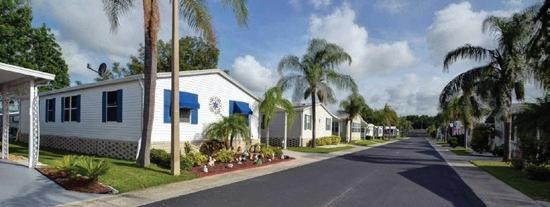
- 18 -
Florida Museum ichthyology collection, UF 237806. Florida Museum photo by Zachary Randall
WOKE, BROKE AND UP IN SMOKE Cont.
If we can convince politicians, Wall Street and the public that providing the only form of non-subsidized affordable housing is a positive force for America and one that should be embraced, supported, and appreciated, then we will have succeeded in an important task. A task that nobody has made any inroads in for the past 50 years.
To succeed in this mission, we will need the buy-in of a significant number of community owners, since there are not that many to begin with. There are roughly ten times more apartment complexes in the U.S. then there are mobile home parks, and we will be competing with much stronger lobby groups and more mainstream business concepts. But at the same time, we are starting at such a low level – with virtually a complete misunderstanding of our industry and false negative perception – that even small successes will be a huge step forward.
Todd Lamb is an entrepreneur, a licensed dealer, real estate investor with over 20 years of industry experience buying, selling, and managing real estate in Texas and Louisiana. He has developed manufactured housing communities, managed townhomes, duplexes, commercial office buildings, warehouses, and apartment complexes.



Todd graduated from Texas Tech University with a B.B.A. in Management in 1992. He is a licensed dealer/retailer with three licenses in Texas and Louisiana. He is an active member of the Texas Manufactured Housing Association (THMA) and has serves on the board of directors.
I urge everyone to start thinking about how to take advantage of the now official recession to create a new awareness of the manufactured housing community business and to elevate its standing among groups that should already embrace and appreciate its benefits and essential role in the American housing market.

- 19 -
Fair Housing Update


Many of the Fair Housing Act violations alleged in the latest cases prosecuted by the Department of Housing and Urban Development (HUD) involve apparent violations. It is hard to imagine in today’s atmosphere that a landlord would demand sexual favors from a tenant or tell a prospective tenant they need to speak English. However, even when the cases involve facts that leave you shaking your head, they are a reminder that federal and state agencies remain committed to fair housing enforcement.
Missouri
By Rick Robinson/ LearnMH
Failure to build apartments to ADA standards is the Charge in this case. Read HUD’s Press Release here. And sexual harassment is the basis of this Charge described in this HUD Press Release
Nevada
HUD settled yet another assistance animal case. Read the HUD Press Release here.
Puerto Rico
This Charge seems basic to those that follow Fair Housing Act cases, but it involves a woman with a seeing-eye dog being denied a rental unit because of a no-pet policy. Read HUD’s Press Release here
Wisconsin
Here is another case involving sexual harassment and discrimination that many people would believe to be common sense. Note in this case that HUD linked state law in the Charge, as well. Read the Press Release here
California
This is a case where the landlord told HUD testers posing as Spanish-speaking prospective tenants that they “needed to speak English in order to be added to properties’ waiting lists.” HUD settled the case. Read HUD’s Press Release here
Hawaii
Here HUD settled two cases (case one – case two) where it was alleged that a developer failed to construct apartment units to ADA standards. Read HUD’s Press Releases here
Maryland
HUD has settled a case where a condo board refused to waive its rule limiting the number of occupants in a rental unit to two persons per bedroom. The Claimant was a family of eight – one of which was a young child having bone marrow transplant treatment at nearby Johns Hopkins Hospital – to temporarily rent a three-bedroom condominium. The family needed to live together to facilitate the young child’s medical treatment and care, which included the screening of all family members for a viable bone marrow donor.
Minnesota
This Charge taught housing providers that when asked about assistance animals, do not reply: “Go find somewhere else to live.” Read HUD’s Press Release here
RICK ROBINSON

Title: EVP of Industry Relations
Email: rick@manufacturedhomes.com
Facebook: rick.robinson
LinkedIn: coolguyrick
Twitter: @rickyrick
Well-known industry professional Rick Robinson has joined ManufacturedHomes.com to become its Executive Vice President of Industry Relations. In that role, the former General Counsel/ Senior Vice President of State and Local Affairs for the Manufactured Housing Institute (MHI) will be working to bring a new level of consumer technology to those buying homes and residing in communities.
- 20 -
The ‘Woke’ War on Affordable Housing
By Mark Weiss, MHARR
not to worry, they’ll help underwrite the ridiculous cost of that electric-powered fire hazard by tossing you a few nuggets in the form of subsidies or tax breaks that can be withdrawn any time the elites want.
The leaders of the “woke” mob – inside government and out -- will never admit that they actually oppose affordable housing and homeownership for millions of lower and moderate-income Americans, including inherently affordable manufactured housing. But they do, with every means available to them. Naturally, they deny the truth of what they do to undermine affordable homeownership for lower-income Americans. In fact, they will tell you just the opposite – that they really care about lower-income people and that, through their various efforts, they simply want what (supposedly) is best for them. The comments filed by various “consumer” and “housing” organizations in the recent U.S. Department of Energy (DOE) rulemaking concerning manufactured housing “energy conservation” standards – and the standards themselves -- are a good example. But it’s all a lie -- a phony, fake narrative. The truth is that the “woke” elite hates affordable homeownership, at least for the lower and moderate-income Americans they use as political pawns.
The “woke” mob’s views regarding homeownership for lower and moderate-income Americans parallel its views on transportation. In the transportation arena, the “woke” crowd, to “save” the planet, ideally wants everyday Americans using government-provided “public” transit. Alternatively, if an American must have a private vehicle, they want it to be an outrageously costly “electric” vehicle. And just to prove the point, they have – and will continue -- to do everything in their power to increase the cost of gasoline, to make the excessive cost of electric vehicles seem reasonable by comparison. But
So, how does this translate to the affordable housing arena, and how does the woke “elite” in government and beyond undermine the availability of affordable, private-sector homeownership? The first and most comprehensive tool that the “woke” elite deploy against affordable homeownership, and the Americans who need and require affordable homeownership, is restrictive and exclusionary zoning. You see, the woke elitists may claim to support lower and moderate-income Americans, but they do not want to actually live with them. They do not want less costly homes in their neighborhoods. They do not want lower income people living in their neighborhoods. They do not want their children going to school with “working class” kids, and they do not want to rub shoulders with the less affluent at the local wine shop. So, they make sure that affordable housing, like manufactured homes, are excluded from their neighborhoods through discriminatory and exclusionary zoning mandates. And, just like that, the “problem” is solved. They are free to preen and posture about affordable housing, without actually having to live in a community that offers affordable housing opportunities for everyone.

And what exactly does restrictive and exclusionary zoning do to the availability of affordable housing and homeownership? Years of research leaves no doubt whatsoever. Multiple studies have shown that restrictive and exclusionary zoning eliminates affordable housing and increases average home prices substantially. A 2016 Century Foundation study, titled “Understanding Exclusionary Zoning and its Impact on Concentrated Poverty,” states, in relevant part: “Exclusionary zoning … keeps affordable housing out of neighborhoods through land use and building code requirements. It’s a legal practice that has been used for decades to keep lower-income people — disproportionately racial minorities — out of wealthy and middle-class neighborhoods across the country. It can have a damaging effect in that it prevents these low-income families from having access to the education and employment opportunities typically found in wealthier neighborhoods.”
Consequently, it should surprise absolutely no one that discriminatory zoning mandates are routinely deployed to exclude lower cost manufactured housing and the lower and moderate-income Americans who rely on manufactured homes as a source of affordable homeownership. The excuses and rationalizations offered in support of such edicts are legion, but their exclusionary and discriminatory impacts are beyond debate.
How else does the “woke” elite undermine and destroy housing affordability? By increasing the cost of everything,

- 21 -
including housing, via rampant inflation fueled, in substantial part, by excessive and unnecessary government spending. In May 2022, the Consumer Price Index (CPI) – the federal government’s measure of inflation within the economy -- was 8.6% year-over-year, its highest level since 1981. This has both direct and indirect impacts on the housing market and housing affordability.

Inflation has a direct negative impact on homeownership by increasing the cost of housing itself, and also by fueling higher interest rates for home loans. Given the price sensitivity of lower and moderate-income homebuyers, moreover, this phenomenon disproportionately impacts consumers who would ordinarily seek access to the affordable housing market and manufactured housing in particular. Such direct impacts have been documented in research conducted by the National Association of Realtors (NAR). According to a recent press report: “The median price of a [site-built] home rose to $375,300, the highest ever recorded …. Compared with the prior month, the median price was up 4.5 percent. From a year ago, the median price is up 15 percent. Prices were up in all four major regions of the country. ‘The housing market is starting to feel the impact of sharply rising mortgage rates and higher inflation taking a hit on purchasing power,’ said Lawrence Yun, NAR’s chief economist.”
And while mainstream HUD Code manufactured housing still costs significantly less than a typical site-built home, neither manufactured homes per se, nor manufactured home consumer loans (particularly in the absence of any Duty to Serve support for manufactured home chattel loans) are immune from inflationary pressures within the broader economy. Consequently, with consumer-level inflation exceeding average wage growth in the United States, the cost of housing is rising faster than the ability of Americans to pay for and afford that housing. And, as is always the case, the greatest harm done by inflation is inflicted on those at the lower end of the economic ladder, who have less earning potential and can least afford disproportionate inflationdriven price increases.
Similarly, inflation has an indirect negative impact on access to homeownership. Quite simply, by increasing the cost of virtually all goods and services within the national economy at a faster and steeper rate than the growth of personal income, families are forced to pay more – and a greater proportion of their income – for non-housing related necessities. This inevitably leaves less income available for homeownership. At upper income levels, this cost “squeeze” may require homebuyers to limit purchases to smaller and less costly homes than they otherwise would consider. At lower income levels, however, inflation and skyrocketing costs for everyday living are more likely to drive consumers completely out of the homeownership market for extended periods of time, thus exacerbating homelessness and government dependence. This is reflected by a recent survey of American households conducted by the Federal Reserve Bank of New York. That survey showed that for the first time in at least a decade, fewer than half of current renters expect to eventually own a home -- a clear reflection of how deeply the rise in prices has damaged the perceived affordability of homes. But don’t look for changes at the federal level to limit either the excessive spending or other policies that have spiked inflation since 2021. In fact, just the opposite is likely, particularly in advance of the November 2022 mid-term election and the 2024 presidential election.
Then there is the third “leg” of the “woke” trifecta – excessive and discriminatory manufactured housing “energy” regulation. While just a handful of states have adopted the 2018 version of the International Energy Conservation Code (IECC) – with most holding onto versions that are much older, and, therefore, more lenient and less costly – DOE plans to discriminatorily saddle the manufactured housing sector with energy standards based on the most recent 2021 iteration of the IECC. By DOE’s own calculations, this will increase the retail-level cost of manufactured homes by as much as $6,000.00, while excluding millions of lower and moderateincome Americans from the HUD Code market and from housing altogether. And this does not even begin to address added costs due to regulatory compliance costs, which have never even been estimated, because DOE has yet to propose a specific enforcement mechanism. Meanwhile, based on industry estimates, which include the effects of inflation on materials and supplies, the actual cost impact of the looming DOE standards could be well over $10,000.00 per home –which would decimate the manufactured housing market and the availability of inherently affordable homeownership for lower and moderate-income Americans.
But that didn’t bother the “woke” crowd, as dozens of “climate change” and supposed “affordable housing” organizations lined up during the rulemaking process to not only support high-cost DOE energy regulation, but to urge DOE to impose ultra-costly “untiered” energy standards to all manufactured housing across-the-board. Supposedly, these organizations did not want lower-income homebuyers to “suffer” from
- 22 -
The ‘Woke’ War on Affordable Housing Cont.
The ‘Woke’ War on Affordable Housing Cont.
manufactured housing industry in this debacle. For years, and particularly during the sham DOE “negotiated rulemaking” process, the Manufactured Housing Institute (MHI) was all too happy to collaborate with energy special interests and DOE itself, in order to advance IECC-based, DOE federal energy standards. Indeed, MHI and virtually all of its members on the DOE Manufactured Housing Working Group (MHWG) (with one single abstention) voted in favor of the October 2014 negotiated rulemaking “Term Sheet” that was the precursor to the “final” DOE energy standards. MHARR, for its part, cast the one and only MHWG “no” vote on that Term Sheet. All of which begs the question, why would any national representative of an industry that thrives on – and is based on – purchase price affordability (as memorialized under federal law), go along with such a process and such a result? MHARR is studying all of this within a broader context and will soon publish the noteworthy results for the industry, consumers and energy stakeholders.
more lenient energy standards than would be applied to higher-price manufactured homes (never mind the much more lenient standards applied to much higher-cost site-built homes). They never bothered to explain, though, that far from “suffering” from lower energy standards, lower-income buyers would instead suffer from being totally excluded from the manufactured housing market and being unable to buy a home of their own as a result of the draconian cost of the untiered DOE energy standards. Far from “protecting” consumers, then, these organizations were actually lobbying to have Americans at the lower end of the economic ladder – people who currently could qualify to purchase a manufactured home – excluded from homeownership altogether and, therefore, more dependent on “big government” than ever.
Then there is DOE itself and its utter hypocrisy. In a June 9, 2022 propaganda news release touting its final manufactured housing energy standards, DOE totally ignores the massive purchase price increases those standards will cause, and the millions of lower-income Americans who will be denied all of the benefits of homeownership as a result. Instead, DOE brags about the “up to” $475 per year in utility bill savings that allegedly will flow from the new standards. Just one minor problem, though. For those excluded from homeownership by the cost of the new standards, there will be no savings, at all, per se. But even for those not totally excluded from homeownership, Moody’s Analytics reported days ago that Americans are paying an extra $460 every month just for life’s basic necessities, because of inflation now running at 8.6% per month. So, even for those not totally excluded by the new DOE standards, their paltry alleged “benefits” will be dwarfed by over $5,500 in added annual household inflation costs, courtesy of the same administration pushing the baseless and unnecessary DOE standards.
And, while we’re on the subject, let’s not forget the role of the ostensible national representative of “all segments” of the
Far from promoting “equity,” then – or anything of the kind – both the DOE “final” energy standards and the “woke” organizations’ effort to impose the harshest standards across-the-board, were and are nothing more than a cynical, contemptuous attempt to balance a “climate change” agenda on the backs of hard-working yet lower-income families who will be excluded from homeownership as a result.
So, “wokesters,” spare us the claptrap. The truth is that your “equity” is as phony as a three-dollar bill. Far from helping the working poor and countless other lower and moderateincome Americans, you are their worst enemy, working to deprive them of life’s most essential elements, beginning with a safe, decent and affordable home.
The Manufactured Housing Association for Regulatory Reform is a Washington, D.C.-based national trade association representing the views and interests of independent producers of federally-regulated manufactured housing.
Manufactured Housing Association for Regulatory Reform (MHARR)

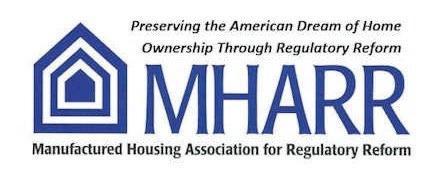

1331 Pennsylvania Ave N.W., Suite 512, Washington D.C. 20004
Phone: 202/783-4087 / Fax: 202/783-4075
Email: MHARR@MHARRPUBLICATIONS.COM
Website: manufacturedhousingassociation.org
- 23 -
Mark Weiss is the President and CEO of the Manufactured Housing Association for Regulatory Reform (MHARR) in Washington, D.C. He has served in that position since January 2015 and, prior to that, served as MHARR’s Senior Vice President and General Counsel.
Majority of Consumers Say They Would Consider Purchasing a Manufactured Home
Two years of significant home price appreciation has resulted in national concerns about housing affordability. However, in new research by Freddie Mac, 6-in-10 individuals say they would consider purchasing the type of dwelling that has become the largest source of unsubsidized affordable housing in the United States: manufactured housing.
Construction costs for manufactured homes are typically lower, which may have contributed to their growing popularity in recent years. According to recent U.S. Census data, 6.2% of people currently live in manufactured homes
A recent Freddie Mac housing survey shows that general familiarity with manufactured housing is relatively high, with 47% of respondents saying they are somewhat or very familiar with manufactured housing. In the study, 62% of people say they are likely to consider purchasing a manufactured home in the future.
Perception of Manufactured Homes
The overall perception of manufactured homes is positive, according to the survey results.
All told, 77% of people who are aware of manufactured homes expressed a positive sentiment toward these homes, describing them as “new,” “efficient,” “affordable” and “easy.”
By Freddie Mac

Most agree that there are tangible benefits to manufactured homes, including the following:
• Allow a wide range of customization.
• Affordable without compromising on quality.
• Ecofriendly and energy efficient.
• A good investment.
Who Is Likely to Consider Buying a Manufactured Home?

Although 62% of people say they are likely to consider purchasing a manufactured home in the future, certain populations are more likely than others to buy them. The survey results were analyzed by generation, race, urbanicity and household income to take a closer look at trends in likelihood to purchase a manufactured home.

Household income did not affect respondents’ reported likelihood to purchase, but the survey data shows that those with an annual income less than $50,000 have a significantly more positive perception of manufactured homes than the total sample or other income groups.
Interested in more consumer research? Gain insights into the housing market from surveys of homebuyers, homeowners and renters in Freddie Mac Consumer Research

- 24 -
HUD Charges Management and Owners of a Minnesota Apartment Building with Disability Discrimination
WASHINGTON - The U.S. Department of Housing and Urban Development (HUD) announced today that the agency charged Mark Frisch, Jennifer Costello, Major Management Company, and Larpenteur Estate Apartments, LLC, operators of a 220-unit apartment building in St. Paul, Minnesota, with discriminating against a prospective tenant based on disability by refusing to allow her assistance animal in the unit. Read the charge here.
“Assistance animals provide people with disabilities the support they need to live comfortably in their home,” said Demetria L. McCain, HUD Principal Assistant Deputy Secretary for Fair Housing and Equal Opportunity. “Today’s action demonstrates HUD’s ongoing commitment to take appropriate action when housing providers fail to comply with the Fair Housing Act.”

“The Fair Housing Act requires housing providers to provide accommodations that are reasonable and necessary, and that includes permitting the use of assistance animals,” said HUD General Counsel Damon Smith. “HUD is committed to vigorously enforcing the Act to protect the rights of individuals with disabilities.”

The Fair Housing Act prohibits discrimination based on disability. This form of discrimination includes refusing to allow reasonable accommodations that would otherwise allow a tenant with a disability an equal opportunity to use and enjoy their housing. A reasonable accommodation includes a waiver of a “no pet” rule for assistance animals. The Act also prohibits statements that indicate a preference or limitation based on disability.
HUD’s Charge of Discrimination alleges that the complainant attempted to rent a unit at the subject property for herself and her husband. However, after she notified Costello, the property manager, that she had an assistance animal, he said that she could not have an animal in the unit. He then suggested that she apply for an apartment somewhere else. The complainant further alleges that when she elevated the matter to Frisch, an owner of both the property and Major Management, he allegedly admonished her, saying that she should think of her neighbors who live at the property because it is “animal-free” and asked her why she did not “go and find somewhere else to live.” She exclaimed, “you are welcome, your animal is not!”
United States Administrative Law Judge will hear HUD’s charge unless any party to the charge elects to have the case heard in federal district court. If an administrative law judge finds, after a hearing, that discrimination has occurred, they may award damages to the family for their losses as a result of the discrimination. The judge may also order injunctive relief and other equitable relief, to deter further discrimination, as well as payment of attorney fees. In addition, the judge may impose civil penalties to vindicate the public interest. If the federal court hears the case, the judge may also award punitive damages to the complainant.
People who believe they are the victims of housing discrimination should contact HUD at (800) 669-9777 (voice) 800-927-9275 (TTY) or the Department of Justice at (800) 896-7743 or 202-514-4713. Additional information is available at www.hud.gov/fairhousing and www.justice.gov
HUD No. 22-078
HUD Public Affairs
(202) 708-0685
- 25 -
Must All Display Homes at Retail Home Centers Have ADA Compliant Wheelchair Ramps?
It’s the manufactured home industry’s practice for display homes to have only temporary steps with handrails located at all entries into a manufactured home. When back doors aren’t fitted with temporary steps, those doors are both locked and screwed shut so that visitors can’t accidentally walk out of them and fall to the ground. It’s also standard practice for Home Sales Centers to have wheelchair ramp access. But are these industry standards legally compliant with the American with Disabilities Act (ADA)?
Recently, a wheelchair bound prospective home buyer visited a manufactured home Retail Sales Center. The Retailer’s management met the woman and advised her that access to show homes would be by nonwheelchair accessible steps only. Anxious to see the homes, and accompanied by an assistant, the wheelchair bound prospective buyer signed a waiver and legal release absolving the Retailer of liability associated with touring the homes at the Sales Center.
During the tour, the prospect’s assistant dropped the prospect while attempting to scale the temporary steps into the home.
By Jeffrey Stewart
The prospect fell, was injured, and sued the Retailer for damages.
Must Centers place ADA compliant wheelchair ramps at all displayed manufactured homes?


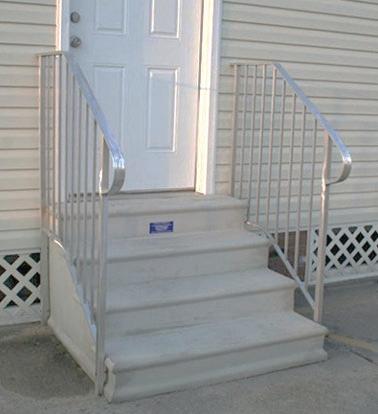
The short answer is “No.” The ADA Technical Assistance Manual, Section III-1.2000, states that a model home does not fall under one of the twelve categories of places requiring ADA accommodation. However, if a Sales Center Office is located within a display home, then it must have ADA compliant wheelchair ramps. All Sales Centers must have wheelchair ramps to be ADA compliant.
For a more detailed discussion of this issue see McNeil v. Time Insurance Co., 205 F.3d 179, 186-188 (5th Cir. 2000); see also Sapp v. MHI Partnership, Ltd., 199 F.Supp.2d 578, 584-585 (N.D. Tex. 2002).

- 26 -
Jeffrey D. Stewart, J.D., Wells & Cuellar, P.C., www. wellscuellar.com, 713-222-1281. Mr. Stewart is a lawyer with the Wells & Cuellar law firm headquartered in Houston, Texas. They are a leading legal services provider for Manufactured Home Retailers and Manufacturers.
Mobile Homes Are a Crucial Source of Affordable Housing. Politicians Are Trying To Zone Them Out of Town.
The government should not take away reliable and affordable housing from those who need it most.
Across the country, legislators are piling on regulations and restrictions that make it harder to build and maintain affordable housing at a time of desperate need.
In Dover-Foxcroft, a small town in Maine, a drafted moratorium on manufactured housing says it “threatens the area’s character and cultural value of the town.” In Blount County, Alabama, there’s an outright ban on homes smaller than 1,800 square feet. In Tate County, Mississippi, new zoning restrictions mean some residents can’t place a manufactured home on their own land
Zoning laws in Slaughterville, Oklahoma, were recently passed that include the word “blight” when referring to mobile homes and describe them as “reduc[ing] the quality of life” for other residents. Park owners are now required to space homes 10 times farther apart and to plant 12-foot-high shrubs in a buffer zone around any new mobile home parks to literally hide mobile homes from view.

From Texas to West Virginia and almost everywhere in between, you’ll find zoning laws that aren’t so subtle in banning mobile homes and mobile home parks altogether. From urban to suburban to rural areas, legislation is being considered and often passed into law that tacks on costs, makes it harder to own a mobile home, and in many cases makes it untenable to ever build a new mobile home park.
Perhaps legislators fear the high crime rates of mobile home parks? That concern has been debunked—crime rates in mobile home communities simply mirror the rates of their neighborhoods. Other studies have found that mobile homes produce less construction waste by a factor of 2.5 and are significantly more energy efficient than traditional homes. Still, others say mobile home parks seem prone to natural disasters like flooding—but the reality is that affordable housing, to be affordable, often must be built on some of the cheapest land, which faces higher hazards.
Maybe people simply don’t like to see the realities of lowincome communities, but mobile homes are crucial for lowwage workers. According to Fannie Mae: “The median annual
By Jefferson Lilly
household income of manufactured home residents who own their homes is about $35,000, half of the median annual income of site-built homeowners….Over one-third of renters of manufactured homes earn less than $20,000 per year and over three-quarters earn less than $50,000 per year.”
With that in mind, the drive to ban affordable housing comes at a cost for middle- and upper-class communities too. Who’s going to wait on middle-class and upper-income customers at the local restaurant? Who’s going to drive the bus that gets that waiter to the restaurant? Who’s going to staff the facility where the bus fills up?
Over the long term, the ripple effect of high housing costs will extend to manufacturing, retail, and medicine prices, as well as any industry with low-wage jobs. Government regulations are causing housing prices to rise beyond the means of low-wage workers; they are being forced to live further away from the communities in which they work and to bear additional transportation costs and higher housing costs for no good reason. Sooner or later, the system becomes unsustainable, prices rise, and businesses close.
But some communities have taken a more pragmatic approach toward affordable housing, and the choice has proven popular. In the mountain town of Granby, Colorado, where the local ski resort economy has made housing unaffordable for many workers, a new development has started selling manufactured homes at just one-third of the average county home sale price.
Just as Granby did, it’s time to rethink assumptions and attitudes toward affordable housing. Tiny homes, recreational vehicles, and mobile homes are housing options that offer greater financial freedom than traditional site-built housing. These new living dwellings are fighting NIMBY attitudes from local government elected officials that favor increasingly expensive traditional housing.
There are approximately 22 million people living in manufactured homes today. The trend is similar for other forms of alternative, affordable housing. As housing costs rise, options for affordable housing are narrowed by misguided regulations from government officials.
Mobile home parks offer a reliable, affordable, sustainable path to home ownership for those who need it most. Governments should not take away options for affordable housing, especially in this time of desperate need.
JEFFERSON LILLY is a mobile home park owner and operator. He is the founding general partner of Park Avenue Partners, a real estate private equity investment firm. leads a team of four individuals who manage and maintain our investments and assist with acquisition and consulting due diligence. Prior to forming Lilly & Company in 2007, Jefferson held various consulting and sales positions with Bain & Company, Viacom, Openwave, and Verisign. He received his BA from the University of Pennsylvania, and his MBA from the Wharton School of Business.

- 27 -
Property Management – A Liability Rich Endeavor

Property management truly is a liability rich endeavor. The National Apartment Association Education Institute (NAAEI) offers a Certified Apartment Manager (CAM) course, and there is one full module on “Risk Management.” It is in fact, a FIVE-hour module. As with all NAAEI programs, the CAM program is worth your consideration. The module covers risk management, risk assessments, and minimizing risks-financial, physical, liability, environmental, employee and more.
The most difficult part of risk management, in my personal (non-attorney) opinion as a long-term operator, is seeking out and discovering risk—uncovering risks we are unaware of, which may pose an unusual and unreasonable risk to those who visit or live in our communities. With customers, clients, team members, suppliers, and more all vying for our time each day, how do we go out and locate risks we are unaware of? And how do we then resolve them, and thereby prevent liabilities from rearing their head—and potentially injuring our valued customers and visitors who we care for each day?
 By Victoria Cowart
By Victoria Cowart
A recent North Carolina Supreme Court ruling determined a Landlord was not liable for tenants’ violent dog, wherein a child was clearly harmed. Despite the heartache, the ruling was unanimous. In essence, the “landlord can’t be held liable for a child’s injuries caused by a dog owned by tenants because he wasn’t told the animal posed a danger to visitors.” Again, the ruling was unanimous.

In today’s world unanimity is a rare thing. Wouldn’t you agree? Of course, if you read this case, you too will be in on the unanimity with those who consider situations like this just awful! While this article is not to be considered legal advice, it is reasonably clear this ruling hinged on the Landlord’s knowledge of the risk.
According to the author, at one point the dog’s owner shared she had informed the landlord about a “first bite,” and later testified she had not. Also of note, Animal Services in this county were involved the incident and ruled it a “minor bite.” Reading this article and tracking the events as they unfolded, you learn the dog owner knew; the county’s animal services knew; and yet, the Landlord truly did not know about a bite incident with this dog and yet, was sued.
Further reading reveals the plaintiff asserted, and deposed a property management professional to this end, who shared the viewpoint that we Landlords should have taken the “beware of dog” signs the owners posted in the yard and the chain for the dog to be an indicator, a “flashing red light” if you will, that we immediately had a “duty to examine potential problems.” Thankfully, the courts disagreed with this theory. Those of us in this industry would likely go so far as to say, that posting those signs and utilizing a chain are generally good liability protection measures. And possibly only an indicator of a dog with great escape skills!
So, what does this all say or mean? In short, liability situations or policies can be discontinued, retained, transferred, or
- 28 -
Property Management – A Liability Rich Endeavor Cont.

Knowledge without action will be the end of your defense and cost you sleepless nights of regret.
If you’d like all the questions asked, and all the answers documented, and all of this to work seamlessly for you and with your teams, contact a service such as PetScreening.com
Victoria Cowart, CPM, NAAEI Faculty
 Director of Education and Outreach
Director of Education and Outreach
Education Sessions for Companies & Associations
704.951.7360
www.petscreening.com
controlled. Those are our options when dealing with risk. These owners took liability control actions and deployed liability control techniques—the signage and the chain—yet those actions were used against the landlord. As most of us know, it comes down to what we knew or should have known in such situations. We see this again and again in liability cases, and in life in general.
This then reinforces that we should ask the right questions when addressing liabilities, document those answers, and then periodically ask those questions and document those answers again. Do what a “reasonable” person would because that is the standard, the one standard, courts will hold us to. And then, be sure to act on what you learn.
Victoria Cowart, CPM, NAAEI Faculty, is the Director of Education & Outreach for PetScreening. Previously, she was a direct multi-family industry member with extensive experience providing management and oversight for multifamily housing communities (conventional & subsidized), mobile home communities, and HOAs. She is a property management instructor and a proud graduate of both the NAAEI Advance Facilitator Training and the NAA Lyceum Program. Victoria obtained her degree in the Management of human resources and then her industry CPM designation. She was honored to be commissioned a SC “Palmetto Patriot,” to receive the Charleston Regional Business Journal’s Executive “Influential Women In Business,” and the NAA AIMS Grassroots Member Advocate of the year. She has served the industry as President of both the local and state affiliates as well as having served as a Regional VP for Region IV for NAA. Victoria has chaired four Committees for NAA, most recently as the 2021 Legislative Chair. She is passionate about education, simplification and creating ease and understanding for industry members. Victoria is a wife, mother and a proud PetScreening pack member who also leads her own “pride” of three pound-kitties.

- 29 -
Why Texas Makes Sense for Manufactured Housing Investment

Three Pillar Communities Principal Daniel Weisfield on business expansion strategies in this increasingly popular sector
Currently in its third generation of acquiring, operating and developing manufactured housing communities, California-based Three Pillar Communities is among the top 50 owners of mobile home parks in the U.S. The company has just expanded outside the West Coast with four Texas communities, and CoFounder & Principal Daniel Weisfield has no intention of slowing down, particularly as demand for affordable housing options is sky-high across The Lone Star State.
“We are very much in growth mode,” Weisfield told MultiHousing News

To find out more about the company’s expansion strategy within the Texas manufactured housing market, we asked Weisfield to weigh in on his latest business moves and how he’s breaking the decades-old stigma around this niche industry.
How would you describe your journey in manufactured housing investment?
Weisfield: I’m a third-generation mobile home park operator. My grandfather and my mom immigrated to the U.S. with nothing. My grandfather fixed wrecked junkyard cars to make a living and, eventually, he saved up enough to buy a mobile home park. My grandfather did everything with his own two hands, and he literally turned trash into gold. He was my hero. So the core values I learned from my family were hustle and grit.
Later, I was fortunate to get a JD/MBA from Yale, to work as a U.S. diplomat and to work at McKinsey & Co. So I’ve seen the ‘institutional’ world, and I’m grateful for the skills I learned there. But my family values shaped me more than my academic degrees. At the end of the day, I come from an immigrant Jewish family that taught me to be humble and work my tail off, and to try to create opportunities where other people don’t see them.
Today, most of Three Pillar Communities’ portfolio is on the West Coast. Why did you decide to enter the Texas manufactured housing market?
By Laura Calugar
Weisfield: As a Californian, I am in awe every time I visit Texas. If Texas were a country, it would be the world’s ninth biggest economy. There is optimism about the future. New infrastructure is being built. Economic growth is legal, visible and encouraged. This is a cliché—and it is the reason so many companies and people are moving to Texas—but it is true.
When I’m in Texas, I see new four-lane highways getting built and I pinch myself. I see new schools and hospitals being built to serve people. I see hundreds of thousands of new housing units being built, which results in lower housing prices for people who need homes. None of this should be shocking in a market-based economy, but it is shocking to me because I come from a place where the market is not working due to social and regulatory choices. In California, we have spotty cell service because we can’t build new cell towers, and we have gnarly traffic jams because we can’t build new roads or train lines, and we have $1 million+ price tags on dilapidated houses because we can’t build new homes.
So, Three Pillar Communities made a deliberate decision to enter the Texas market because Texas has a major need for affordable housing, and Texas recognizes that private sector investment in housing is the most effective way for society to create an adequate supply of affordable homes.
You are employing an untraditional strategy in order to build scale in the Texas market. Can you explain your approach?
Weisfield: We knew we wanted to build scale in Texas, so we decided to enter the market by pursuing four different strategies simultaneously: acquiring existing mobile home parks; building new manufactured housing communities
- 30 -
Daniel Weisfield, CoFounder & Principal, Three Pillar Communities. Image courtesy of Three Pillar Communities
Sandell, a 108-site manufactured housing community in Corsicana, Texas, courtesy of Three Pillar Communities
Why Texas Makes Sense for Manufactured Housing Investment Cont.
on raw land; performing third-party management for other mobile home park owners; and selling manufactured homes to consumers as a licensed manufactured home dealer.
On the existing parks acquisitions side, we closed six weeks ago on a 108-unit park in Corsicana that fell into disrepair under the prior owner. We will be bringing in new manufactured homes to fill vacant lots, rehabbing existing homes, rebuilding infrastructure and working with residents to improve community standards and curb appeal.
On the development side, we closed on our first greenfield manufactured housing development project in Texas—outside Austin—about a month ago. That project is called Blue Sky Estates and it is located in Jarrell. We are also pursuing land use approvals for a new 200-unit community in San Antonio, and we are in discussion regarding a potential new 500-unit community outside Dallas.
On the third-party management side, we started managing two parks for other community owners on May 1. One is a 57unit park in Ennis. The other is an 87-unit park in Joshua.
And finally, on the dealership side, we’ve obtained our stateissued license to sell manufactured homes in Texas, and we’re working on ramping up that business, which has obvious synergies with the parks business.
What are the most difficult aspects of building manufactured housing communities from the ground up?
Weisfield: Manufactured housing is the most stigmatized and most misunderstood type of housing that exists. So our biggest obstacle to developing new parks on raw land is obtaining local land use approvals, which requires us to educate local folks about what we are really creating.
In reality, we build top-quality neighborhoods that enable our residents to build wealth and stability through homeownership. Our homes look like conventional site-built homes, and they often have beautiful modern kitchens, granite countertops, stainless steel appliances and three bedrooms and two bathrooms. There is a massive social need for our product, and we provide a solution that helps communities solve their housing affordability problem.
But we have to fight an uphill battle to educate municipalities about the reality of our product. We are constantly fighting against outdated stereotypes about “trailer parks.” The new manufactured homes we are installing in our communities in 2022 do not look anything like 1960s aluminum “trailers!”
The MHC stock in the U.S. is quite old, with most homes requiring significant investment in infrastructure, roads, home removal and lot redevelopment. What do you usually do to upgrade an old manufactured housing community?

Weisfield: We’ve developed a playbook for reviving older manufactured housing communities, which provide a crucial source of housing stock. Our Chief Operating Officer Corey Wikstrom has done this successfully at hundreds of manufactured housing communities all over the country.
First, we focus on implementing basic professional management practices, including training a professional community manager, rolling out up-to-date leases if needed, and implementing digital rent collection—which includes cash payment options for unbanked residents. Second, we focus on showing residents our commitment by upgrading common areas and fixing park infrastructure. Third, once we’ve demonstrated that we will do our part as the community owner to upgrade the parts of the community that are within our control, we ask the residents to do their part in the parts of the community that are within their control, which means complying with the community rules and regulations that they signed up for when they moved in.
What are your plans going forward? Are you also looking at manufactured housing investment opportunities in other Texas metros or in other southern states?
Weisfield: Yes, we are looking at MHC opportunities in other Texas metros, as well as in other southern states, but in reality we’re looking at MHC acquisitions on a national basis. Initially, we thought it would make sense to screen by market, and then analyze individual deals, but we’ve actually learned that
- 31 -
Blue Sky Estates, a new manufactured housing community in Jarrell, Texas. Image courtesy of Three Pillar Communities
Why Texas Makes Sense for Manufactured Housing Investment Cont.

we’d rather see properties in every market, and then quickly determine whether the deal’s risk and return make sense, based on the asset profile and the market profile.
For example, if we’re going to pursue a new park development project on raw land, we’re going to need to see strong population growth in the market to ensure that we can sell new homes. For a stabilized park, we’ll be comfortable with flatter population trends.
We also don’t want to screen out opportunities in less landlord-friendly states like California, Oregon, Washington, Colorado and the northeastern states. We are responsible manufactured housing operators, so we are comfortable operating within a more restrictive regulatory environment, as long as the risk and return make sense.
Laura Calugar is a senior editor with Commercial Property Executive and Multi-Housing News. She has a 10+ year background in audio-visual journalism and joined the CPE-MHN team in 2016.

Laura Calugar | Senior Editor | Publishing Laura.Calugar@cpe-mhn.com
Grand Central Place, 60 E. 42nd St., Suite 2130, New York, N.Y. 10165 www.cpexecutive.com | www.multihousingnews.com
- 32 -
Why the DOE Energy Rule Should Be DOA
ARTICLE SUMMARY: “The Federal Government is taking aggressive initiatives in a supposed effort to reduce energy usage and “greenhouse gasses.” These include ominously expensive new construction mandates for manufactured homes that are unwise, ill-informed, and overly expensive. The federal government (principally via HUD) is responsible for Manufactured Home Building codes. Site-built construction is controlled primarily by local governments and will not be subjected to these new mandates. Absent immediate action to stop the new Department of Energy rules, manufactured homes will be priced out of many consumer’s budgets.”
On May 31, 2022, the fifteen-year battle over U.S. Department of Energy (DOE) “energy conservation” standards for HUD Code manufactured homes came to a head as DOE published its final standards with full implementation scheduled for May 31, 2023. Not to put too fine a point on it, these standards are - and will be if not confronted, stopped, and substantially modified - a disaster for the manufactured housing industry, consumers, and the country, which faces an extreme and growing shortage of affordable housing. As a result, the industry and other stakeholders have less than a year (and, in reality, less than that) to take action to upend the DOE standards and send the DOE process back to the drawing board. Absent that, the destructive and discriminatory DOE standards will become a fait accompli, with further market-killing mandates spewing forth on a regular basis, as energy and climate special interests push the International Energy Conservation Code (IECC) - the statutory benchmark for the DOE standards -- toward the holy grail of “net-zero” energy use. The question, then, is how can the DOE rule be stopped?

Any objective analysis of that question must be, first and foremost, grounded in reality rather than speculation or wishful thinking. In that regard, the Manufactured Housing Institute (MHI) - which made a crucial error in initially supporting the DOE rulemaking process - is now promoting legislation that would require DOE, among other things, to “fully consult with HUD” and require any DOE energy standards to be “adopted by HUD as part of the HUD Code.” While such legislation might have been useful at a much earlier stage, when MHI
 By Mark Weiss, MHARR
By Mark Weiss, MHARR
could have worked with MHARR (as it did on the 2000 reform law) to ensure legitimate and cost-effective standards, MHI’s delay in seeking such relief has given DOE and energy special interests the upper hand.
Put simply, it is highly unlikely that a legislative or Executive Branch remedy would succeed today, or in the near-term. Both the Biden Administration and the current majorities in Congress have made it clear that “climate change” and related energy consumption policies are among their highest priorities. This perspective will not change before the November 2022 midterm election and the seating of a new Congress in 2023. Therefore, any chance of enacting legislation or eliciting Executive Branch relief for the impending energy standards, at present, is virtually nil. After going to the effort to produce final standards under 15-year-old enabling legislation and a court-ordered deadline, and with energy and “climate change” activists poised to fight any implementation hiccup, neither the current Congress nor the current administration is going to adopt legislation or support any remedy that would alter the status quo
Unfortunately, the picture does not improve significantly even if the 2022 midterm election produces a change in control of one or both houses of Congress as some prognosticators suggest. A change in control of the House of Representatives, but not the Senate, would leave any remedial legislation in limbo. A change in control of both houses could conceivably lead to some type of relief legislation, but a presidential veto would be a virtual certainty. And, with a closely divided Senate (the likely outcome under any scenario) a veto override requiring 2/3 majority would be a non-starter. Consequently, the prospect of relief legislation becoming law prior to implementation of the DOE standards would be minimal, with virtually no possibility of Executive Branch relief.
- 33 -
Why the DOE Energy Rule Should Be DOA Cont.
Based on this analysis, the best prospect for timely relief from the DOE rule continues to be in the courts. And while judicial action has its own challenges, including cost, unpredictability, and no guarantee of success, it is, at least:
1. A forum that is available now.
2. Which has the ability to act prior to the scheduled DOE implementation date.
3. That could force either a “re-do” of the DOE rule or, at a minimum, set back the implementation timeline to a point when the prospect of obtaining either legislative or Executive Branch relief would be greater.

Conversely, a failure to act now to thwart the DOE rule would not only allow that rule to devastate the HUD Code market in the near-term, but also allow it to become the baseline for a non-stop parade of ever more stringent and costly IECC-based energy standards for HUD Code homes under section 413(b) (3) of the Energy Independence and Security Act of 2007 (EISA).
Given these factors, what would a court challenge to the DOE rule look like? As with virtually all substantive federal rules, the DOE energy rule is subject to judicial review under the Administrative Procedure Act (APA). The APA provides, in part, that: “a person ... adversely affected ... by agency action within the meaning of a relevant statute, is entitled to judicial review thereof.” The APA, in tum, directs a “reviewing court” to “hold unlawful and set aside agency action” that is “arbitrary, capricious, an abuse of discretion, or otherwise not in accordance with law....” This authorizes a court to enter an injunction against enforcement of the DOE “final” standard and grant other relief, such as vacating the final rule and directing DOE to engage in a proper rulemaking consistent with EISA, including its cost benefit and HUD/Manufactured Housing Consensus Committee (MHCC) consultation mandates.
Regarding the substance of such claims, while a multitude of theories are potentially available to assert the invalidity of the DOE energy rule, there are several claims that are more or less obvious based on written comments that MHARR has already submitted to DOE (and others) in connection with the rule. Those arguments are summarized below, but the list is by no means exhaustive.
The essential basis for a court challenge to the DOE rule, would be that the rule is “arbitrary, capricious and not otherwise in accordance with law” because of fundamental errors both substantively in the rule itself and procedurally in the DOE rulemaking. And while the APA “arbitrary and capricious” standard is itself “narrow” and relatively deferential to agency decision-making, there still must be, as recently noted by the Supreme Court, a reasoned basis for the choices made by DOE, a DOE examination of the “relevant data” and “a rational connection between the facts found and the choice[s] made” by the agency. In this matter, however, DOE’s final rule fails to meet the APA/EISA 413 standard in multiple respects.
First, EISA expressly requires DOE to consider the cost of any manufactured home energy standard and reject any standard that would not be cost-effective from either the standpoint of impact on the initial acquisition cost of the home or life-cycle construction and operating costs. This is particularly crucial for manufactured housing (the only federally regulated segment of the housing industry), which is expressly recognized as affordable housing by federal manufactured housing law and subject to a strict cost-benefit balancing test under that law. DOE, however, cannot (and has not) made any such determination in this case because, as the full “cost” of any regulation necessarily includes regulatory compliance costs, and DOE has never calculated, estimated, or considered those costs.
Indeed, DOE has repeatedly admitted that it has not considered any of the regulatory compliance costs that will be necessitated by its final rule. Thus, while DOE asserts that its rule is “costeffective when evaluating” its impact “on the purchase price of the manufactured home and on the total life-cycle construction and operating costs,” it acknowledges that it has not yet proposed a testing and regulatory compliance mechanism, and further admits that it has not considered the likely cost impact of those requirements on either regulated manufacturers or consumers. Regarding testing, DOE states: “DOE is not addressing a test procedure in this rulemaking. DOE will consider... test procedures, including an analysis of any related costs, in [a] future action…”. Similarly, regarding enforcement, DOE states: “DOE is not addressing [certification, compliance and enforcement] issues in this rulemaking…”. The DOE rule, therefore, includes no analysis of the likely cost(s) of testing, certification, compliance and enforcement in connection with the final manufactured housing energy standards.
To the extent that the alleged “cost” of the final DOE standards fails to include a fundamental and necessary cost element (i.e., regulatory compliance costs), the final standards cannot be shown to meet either the substantive cost-benefit criteria of EISA section 413, or the “arbitrary and capricious” standard of the APA.
Second, DOE’s alleged cost analysis fails to include or consider other major factors. The “costs” implicated by cost-benefit analysis and the “reasoned decision-making” mandated by the APA have been construed broadly by the courts. Indeed, the Supreme Court has stated that “any disadvantage” can
- 34 -
Why the DOE Energy Rule Should Be DOA Cont.
be a “cost” that must be considered by an agency. Given this broad construction, the DOE rulemaking fails on multiple points already detailed in prior MHARR comments including, but not limited to:
1. Its failure to properly consider the full cost of the exclusion of millions of potential purchasers from the HUD Code market due to excessive regulation-driven purchase price increases; and
2. Its failure to consider the compliance cost and purchase price impacts of regulatory unpredictability and uncertainty flowing from:
a. Ongoing IECC code changes; and/or
a. Arbitrary and capricious DOE changes and modifications to IECC criteria based on its alleged “discretion” to alter those requirements.
Each of these failures, individually, would constitute a sufficient basis to overturn the DOE rule.
steps, represents a completely separate basis for relief. While DOE, understandably, claims that its “negotiated rulemaking” process is in the rearview mirror, repeated references in the proposed and final rule to the conclusions of the negotiated rulemaking “Working Group,” tell a different story.
Fifth, but perhaps most important, is DOE’s failure to comply with EISA section 413 by failing to consult with HUD and the MHCC in a meaningful way at the beginning of the standardsdevelopment process, when such consultation might have had a beneficial impact in ensuring the consistency of DOE’s standards with the unique construction and role of manufactured housing as a source of affordable homeownership. Instead, and in violation of EISA, DOE came to HUD and the MHCC as an afterthought, not to substantively engage with either, but to conduct cursory briefings on a standard and a standards concept that were already a fatally flawed fait accompli
As noted above, these are just some of the claims that could be asserted against the DOE final rule in an appropriate court action. There are many others as documented by MHARR. And potentially, there are still others that could be explored and refined in the lead-up to a court action, including DOE’s citation of the Social Cost of Carbon (SCC) metric, even. Though DOE disingenuously denies any reliance on that guesswork masquerading as “science”.
Third, DOE’s alleged cost-benefit analysis is fundamentally flawed in that it materially underestimates the severity and impact of inflation on both the cost of the final standards and the purchasing ability of manufactured housing consumers. For example, DOE’s August 26, 2021, Supplemental Notice of Proposed Rulemaking assumed an annual inflation rate of 2.33%, while its October 26, 2021, Notice of Data Availability reduced the assumed rate to 2.28%. Since that time, however, real annual inflation has soared to .2.J.% and remains near its 40-year high. Actual inflation, accordingly, is more than four times the DOE “estimate,” with purchase price impacts that would materially exceed those estimated.
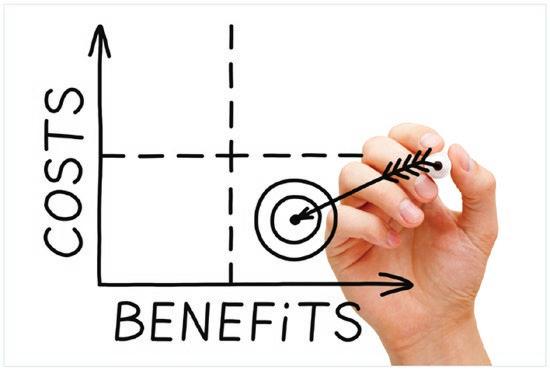
Fourth, as MHARR has extensively documented, DOE’s procedure in developing the final energy standards, from its scam “negotiated rulemaking,” to its phony and fundamentally tainted “Manufactured Housing Work Group,” to its selective leaks of key information, collusion with special interests and other deceitful

But nothing will change without a court challenge to invalidate and enjoin the enforcement of the DOE “final” standard. Make no mistake about it. This standard, if left intact, will destroy key segments of the manufactured housing industry (especially small businesses and the industry’s most affordable homes) by causing prices to skyrocket while excluding millions of Americans from the market. And forget all the talk about energy subsidies, credits or offsets from an already bloated federal government. Talk is cheap, unlike the DOE standards. The industry, accordingly, is at a crucial crossroads. If it accepts its drubbing by DOE, the drubbing will never end. The results will be dire for many and fatal for some. Or it can fight the DOE rule in court. It won’t be easy and it won’t be cheap. But the alternative is worse and crunch time is fast approaching. The industry as a whole must be prepared to take this major step.
Mark
Manufactured Housing Association for Regulatory Reform (MHARR)

1331 Pennsylvania Ave N.W., Suite 512, Washington D.C. 20004
Phone: 202/783-4087 / Fax: 202/783-4075
Email: MHARR@MHARRPUBLICATIONS.COM
Website: manufacturedhousingassociation.org
- 35 -
Weiss is the President and CEO of the Manufactured Housing Association for Regulatory Reform (MHARR) in Washington, D.C. He has served in that position since January 2015 and, prior to that, served as MHARR’s Senior Vice President and General Counsel.
SECO Veterans Program 2022
It’s extremely hard to show a retired United States Veteran just how much we appreciated their service All of us who were not there during their time serving our country have no idea what they went through and endured
That fact hit home with me a few years ago when a close friend who is a resident in our community could not breathe well in the summer and needed an extra air conditioner in his house. He was a Purple Heart Veteran of the Iraq War. We had another resident who was a Marine Veteran of the Afghanistan War who would have terrible flashbacks when 4th of July would arrive, and the fireworks were going off in the neighborhood behind his house.
I cannot say “thank you” enough to these men for their sacrifice and the price they continue to pay for their service to our country.
A few years ago, with the thought of honoring these soldiers and others like them, we applied for a non-profit with the goal of taking net proceeds from our annual meeting and strategically helping the honorably discharged veterans living in manufactured housing communities. This is how SECO, (a national conference for community owners, by community owners) a group of manufactured home park owners around the country decided to come together to help make their homes more comfortable if they are not financially able.
How you can help…
If you have an honorable discharged U.S. Veteran in your MH Community that could use a wheelchair ramp, ADA toilet, handrails in the shower, A/C units, extra lighting, or anything needed to make their lives better, please contact us and we will send you an application for the resident. With the help of the community owner or manager, a SECO committee (consisting of park owners and industry participants who have served in the U.S. Navy, Marines, Army, and Air Force) will review the application.*
By David Roden
On Oct. 3, 2022, park owners and managers from all around the country will meet outside Atlanta for the 11th year to discuss issues we all face each day and to view a dozen or more new homes that local manufacturers will be bringing. Park Managers will meet on Monday, Oct. 3, while the first SECO Golf Tournament is happening at the Stone Mtn. Golf Course which is on site. On Wed. we will be addressed by our keynote speaker, Mark Yost, CEO of Skyline/Champion.
You can visit our website at www.secoconference.com for more information about the Veterans Program and to register for this year’s meeting at Stone Mtn. Ga.

Or contact me directly about the Veterans program at davidroden@yahoo.com or 423-760-4819.
SECO is a 501(c)(3) and accepts year-round donations for this program that can be applied to help U.S. Veterans across this great country.
*Prior to approval, documentation may be required

- 36 -
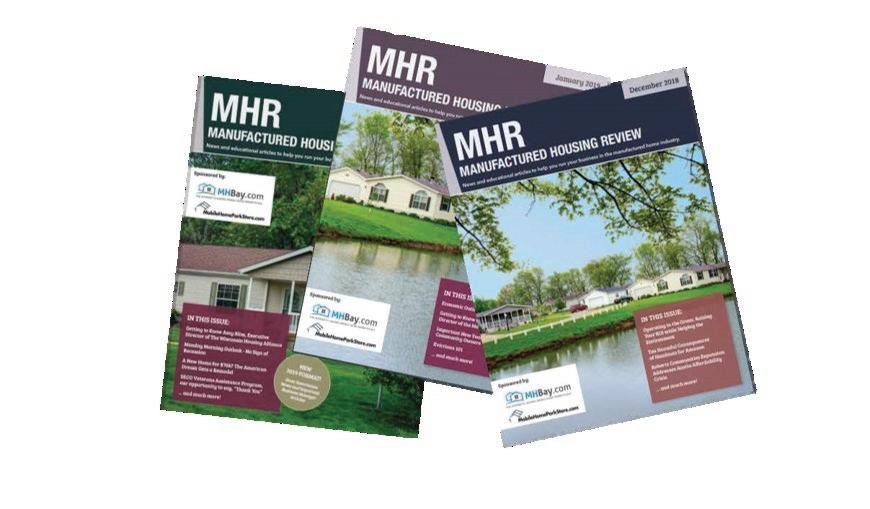
MHR MANUFACTURED HOUSING REVIEW We are an electronically delivered quarterly magazine focused on the Manufactured Housing Industry. From Manufactured Home Community Managers, to Retailers, to Manufacturers, and all those that supply and service them, we supply news and educational articles that help them run their businesses. ManufacturedHousingReview.com Communications regarding any alleged offending, inappropriate, inaccurate or infringing content should be directed immediately to kkelley@manufacturedhousingreview.com along with the communicator’s contact information. Have something to contribute or advertise? Email us at staff@manufacturedhousingreview.com



































































 By Victoria Cowart
By Victoria Cowart


 Director of Education and Outreach
Director of Education and Outreach







 By Mark Weiss, MHARR
By Mark Weiss, MHARR





